Humminbird 987C SI User Manual
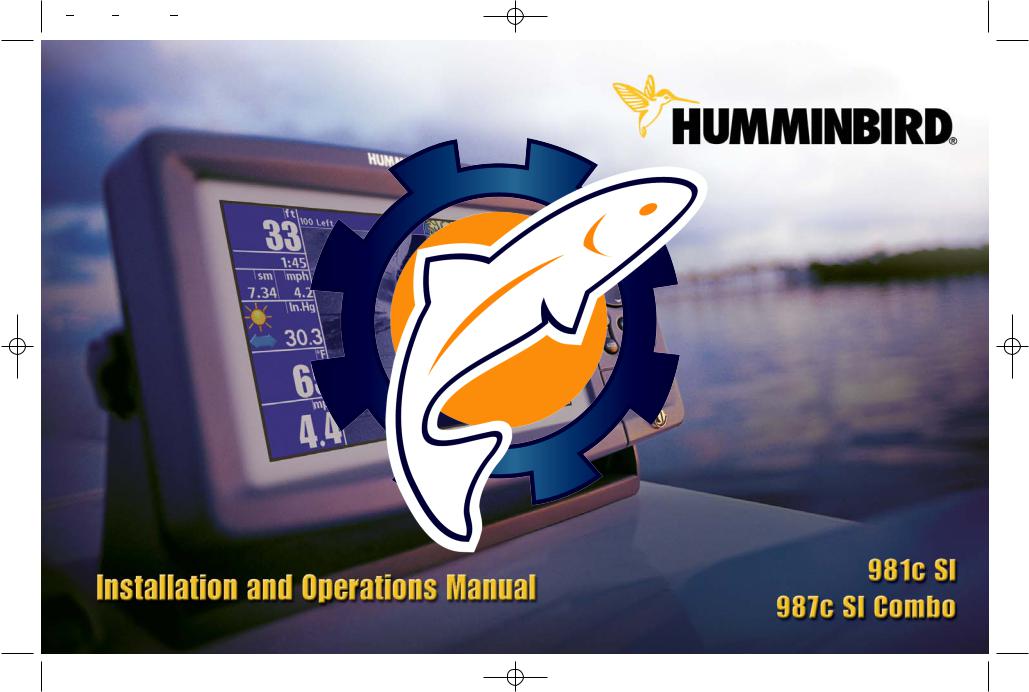
www98x Manual..reelsche531376-1 A.qxd m2/23/2005atic11:39..coAM mPage 1

www98x Manual..reelsche531376-1 A.qxd m2/23/2005atic11:39..coAM mPage 2
Thank You! |
531376-1_A |
Thank you for choosing Humminbird®, America's #1 name in fishfinders. Humminbird® has built its reputation by designing and manufacturing top-quality, thoroughly reliable marine equipment. Your Humminbird® is designed for trouble-free use in even the harshest marine environment. In the unlikely event that your Humminbird® does require repairs, we offer an exclusive Service Policy - free of charge during the first year after purchase, and available at a reasonable rate after the one-year period. For complete details, see the Warranty section included in this manual. We encourage you to read this installation and operations manual carefully in order to get full benefit from all the features and applications of your Humminbird® product.
Contact our Customer Resource Center at either 1-800-633-1468 or visit our website at
www.humminbird.com.
WARNING! This device should not be used as a navigational aid to prevent collision, grounding, boat damage, or personal injury. When the boat is moving, water depth may change too quickly to allow time for you to react. Always operate the boat at very slow speeds if you suspect shallow water or submerged objects.
WARNING! Disassembly and repair of this electronic unit should only be performed by authorized service personnel. Any modification of the serial number or attempt to repair the original equipment or accessories by unauthorized individuals will void the warranty. Handling and/or opening this unit may result in exposure to lead, in the form of solder.
WARNING! This product contains lead, a chemical known to the state of California to cause cancer, birth defects and other reproductive harm.
DualBeam PLUS™, Fish ID+™, Humminbird®, HumminbirdPC™, RTS® Window, SmartCast®, WhiteLine®, X-Press™ Menu, Structure ID®, WideSide® and WeatherSense® are trademarked by or registered trademarks of Humminbird®.
© 2005 Humminbird®, Eufaula AL, USA. All rights reserved.
i
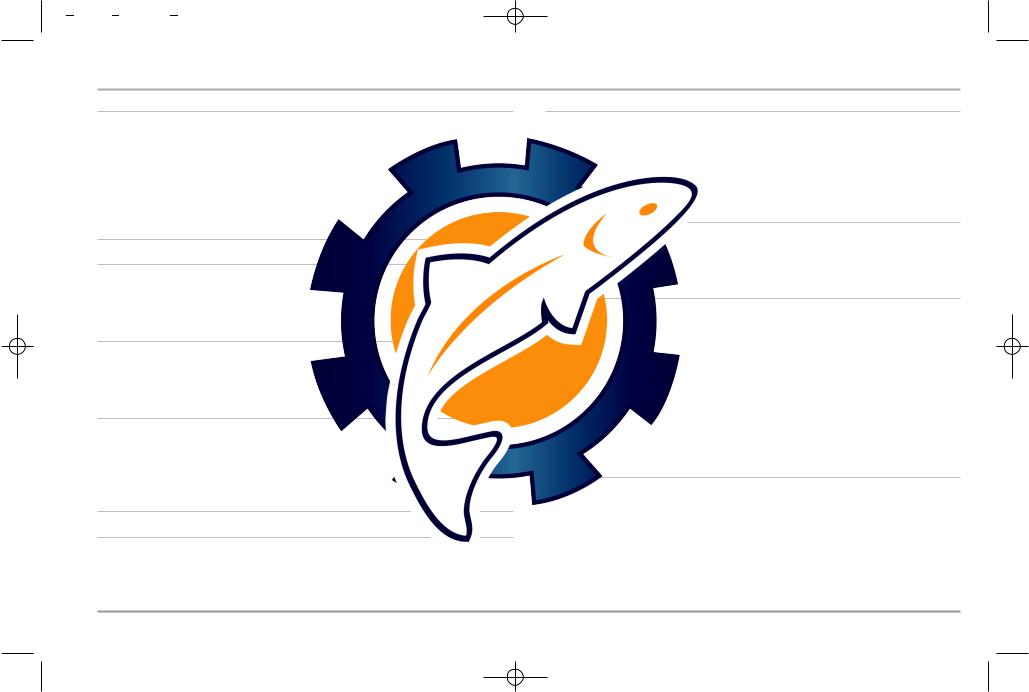
www98x Manual..reelsche531376-1 A.qxd m2/23/2005atic11:39..coAM mPage 3
TABLE OF CONTENTS
900 Series™ Introduction |
1 |
How the 900 Series™ Works .................................................................................................. |
1 |
Side Imaging Sonar .................................................................................................................... |
1 |
DualBeam PLUS™ Sonar .......................................................................................................... |
1 |
GPS and Cartography (987c SI Combo models only) ............................................................ |
2 |
Multi-Media Card (MMC)/SD Slot ........................................................................................ |
2 |
Accessory Bus .............................................................................................................................. |
3 |
Installation Overview |
3 |
Control Head Installation |
4 |
Gimbal Mounting the Control Head .................................................................................... |
5 |
In-Dash Mounting the Control Head.................................................................................... |
8 |
Connecting the Control Head Power Cable to the Boat .............................................. |
10 |
Transducer Installation |
11 |
Transom Transducer Installation ........................................................................................ |
12 |
Trolling Motor Transducer Installation ............................................................................ |
16 |
Test and Finish the Transducer Installation .................................................................... |
17 |
GPS Receiver Installation (987c SI Combo models only) |
18 |
Stem Mounting with an Existing 1" - 14 Thread Stem.................................................. |
18 |
Access Under Mounting Location ...................................................................................... |
19 |
No Access Under Mounting Location ................................................................................ |
19 |
Finish Routing the Cable and Check GPS Receiver Operation .................................. |
20 |
Speed Accessory Installation |
20 |
Testing the System Installation |
22 |
Getting Started - Using Your 900 Series™ |
23 |
Powering Up the Control Head .......................................................................................... |
23 |
What’s on the Sonar Display .............................................................................................. |
24 |
Understanding Sonar History ............................................................................................ |
25 |
Real Time Sonar (RTS®) Window ........................................................................................ |
25 |
Sonar Bottom Presentation .................................................................................................. |
25 |
Understanding Side Imaging |
26 |
What’s on the Side Imaging Display ................................................................................ |
27 |
Side Imaging Technology: How It Works ........................................................................ |
28 |
Side Imaging: On the Water Interpretation.................................................................... |
28 |
Key Functions |
31 |
POWER/LIGHT Key .................................................................................................................. |
31 |
VIEW Key...................................................................................................................................... |
31 |
MENU Key.................................................................................................................................... |
31 |
4-WAY Cursor Control Key...................................................................................................... |
32 |
View Preset Keys ...................................................................................................................... |
32 |
EXIT Key........................................................................................................................................ |
32 |
INFO Key (987c SI Combo models only) .................................................................................. |
32 |
MARK/GOTO Key (987c SI Combo models only) .................................................................. |
33 |
ZOOM (+/- Key) (987c SI Combo models only) .................................................................... |
33 |
Views |
33 |
Views and Readouts................................................................................................................ |
34 |
Sonar View.................................................................................................................................. |
34 |
Sonar Zoom View .................................................................................................................... |
35 |
Split Sonar View ...................................................................................................................... |
36 |
Side Imaging View .................................................................................................................. |
36 |
Side/Sonar Combo View........................................................................................................ |
37 |
Bird’s Eye View (987c SI Combo models only) ...................................................................... |
38 |
ii
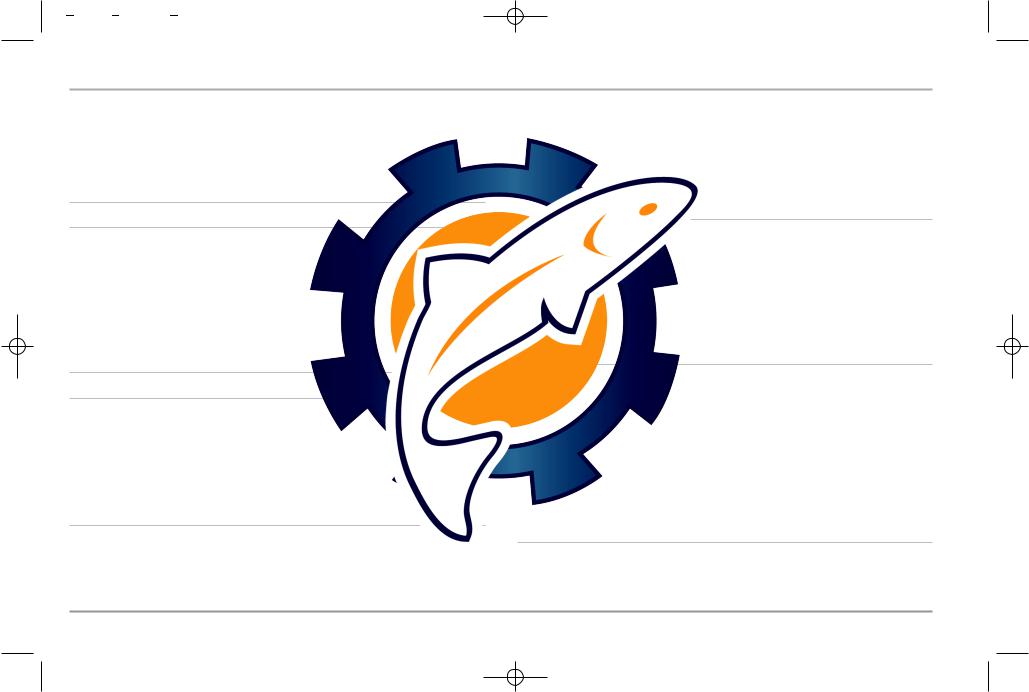
www98x Manual..reelsche531376-1 A.qxd m2/23/2005atic11:39..coAM mPage 4
TABLE OF CONTENTS
Chart/Bird’s Eye Combo View (987c SI Combo models only) .......................................... |
38 |
Chart View (987c SI Combo models only) .............................................................................. |
39 |
Chart/Sonar Combo View (987c SI Combo models only) ................................................ |
39 |
Chart/Side Combo View (987c SI Combo models only).................................................... |
40 |
Chart Orientation (987c SI Combo models only) ................................................................ |
40 |
Viewing Cartography (987c SI Combo models only) |
40 |
Navigation (987c SI Combo models only) |
41 |
Waypoints, Routes and Tracks ............................................................................................ |
42 |
Save, Edit, or Delete a Waypoint ........................................................................................ |
42 |
Navigate to a Waypoint or Position .................................................................................. |
43 |
Add a Waypoint Target or Trolling Grid .......................................................................... |
44 |
Save, Edit or Delete a Route ................................................................................................ |
45 |
Save or Clear a Current Track .............................................................................................. |
45 |
Edit, Delete or Hide Saved Tracks ...................................................................................... |
45 |
The Menu System |
46 |
Start-Up Options Menu |
47 |
Normal Operation.................................................................................................................... |
48 |
Simulator .................................................................................................................................. |
48 |
System Status .......................................................................................................................... |
48 |
Self Test........................................................................................................................................ |
48 |
Accessory Test............................................................................................................................ |
49 |
GPS Diagnostic View (987c SI Combo models only) .......................................................... |
49 |
Sonar X-Press™ Menu |
50 |
Active Side .................................................................................................................................. |
50 |
Split Position.............................................................................................................................. |
50 |
Sensitivity .................................................................................................................................. |
51 |
Upper Range (Advanced, Sonar, Split Sonar and Active Sonar Side Views only) .............. |
51 |
Lower Range .............................................................................................................................. |
52 |
Chart Speed .............................................................................................................................. |
52 |
Zoom Level (Sonar Zoom View, 981c SI models only) .......................................................... |
52 |
Bottom Lock (Sonar Zoom View only) .................................................................................... |
53 |
Bottom Range (Sonar Zoom View only, when Bottom Lock is On) .................................... |
53 |
Sonar Colors................................................................................................................................ |
53 |
Side Imaging X-Press™ Menu |
54 |
Active Side .................................................................................................................................. |
54 |
Split Position .............................................................................................................................. |
54 |
SI Side .......................................................................................................................................... |
55 |
SI Sensitivity .............................................................................................................................. |
55 |
SI Range ...................................................................................................................................... |
55 |
Chart Speed .............................................................................................................................. |
55 |
SI Colors ...................................................................................................................................... |
56 |
Navigation X-Press™ Menu (987c SI Combo models only) |
56 |
Active Side .................................................................................................................................. |
57 |
Split Position .............................................................................................................................. |
57 |
Save Current Track .................................................................................................................. |
57 |
Clear Current Track .................................................................................................................. |
57 |
Save Current Route (Only When Navigating) ...................................................................... |
58 |
Skip Next Waypoint (Only When Navigating) .................................................................... |
58 |
Cancel Navigation (Only When Navigating) ........................................................................ |
58 |
Remove Target (Only If a Target is Active) ............................................................................ |
58 |
Remove Grid (Only If a Grid is Active) .................................................................................... |
59 |
Sonar Menu Tab |
59 |
Beam Select .............................................................................................................................. |
60 |
Side View Frequency................................................................................................................ |
60 |
Fish ID+™ .................................................................................................................................... |
60 |
iii
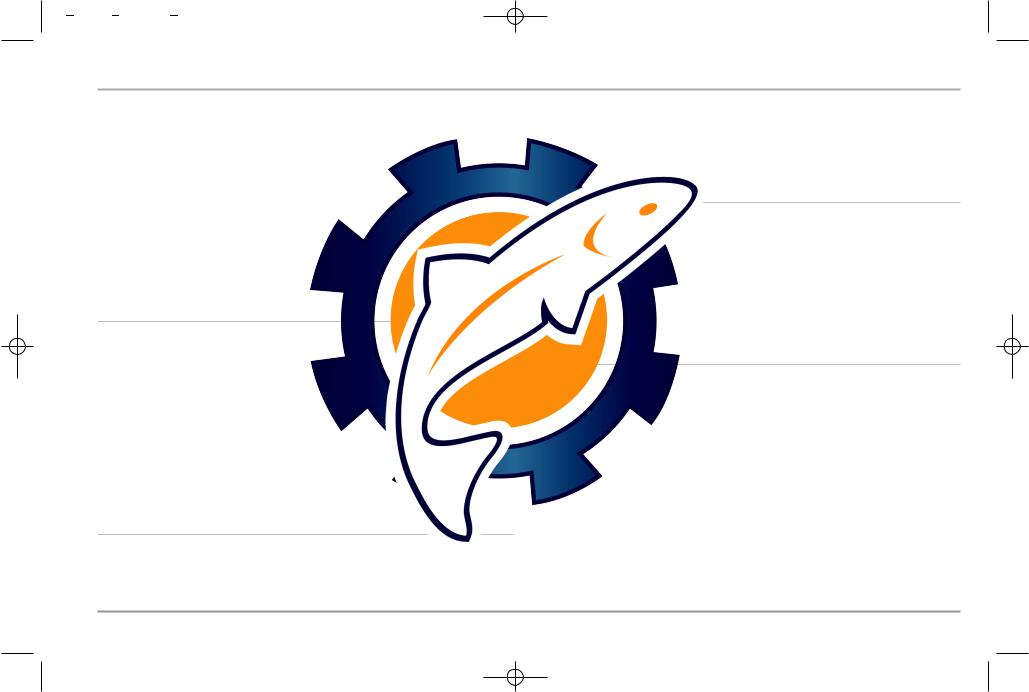
www98x Manual..reelsche531376-1 A.qxd m2/23/2005atic11:39..coAM mPage 5
TABLE OF CONTENTS
Fish ID Sensitivity...................................................................................................................... |
61 |
Real Time Sonar (RTS®) Window ........................................................................................ |
61 |
Bottom View.............................................................................................................................. |
62 |
Zoom Width (Sonar Zoom View only).................................................................................... |
62 |
50 kHz Sensitivity (Advanced)................................................................................................ |
63 |
Depth Lines (Advanced)............................................................................................................ |
63 |
Surface Clutter (Advanced)...................................................................................................... |
63 |
Noise Filter (Advanced) ............................................................................................................ |
63 |
Max Depth (Advanced) ............................................................................................................ |
64 |
Water Type (Advanced) ............................................................................................................ |
64 |
Color Bar...................................................................................................................................... |
64 |
Temperature Graph (Sonar View only, with Temperature input)...................................... |
65 |
Navigation Menu Tab (987c SI Combo models only) |
65 |
Tracks............................................................................................................................................ |
66 |
Waypoints .................................................................................................................................. |
66 |
Routes ........................................................................................................................................ |
66 |
Chart Orientation .................................................................................................................... |
67 |
North Reference........................................................................................................................ |
67 |
Trolling Grid Rotation.............................................................................................................. |
67 |
Trackpoint Interval.................................................................................................................... |
67 |
Track Min Distance (Advanced).............................................................................................. |
68 |
Map Datum (Advanced) .......................................................................................................... |
68 |
Export All Nav Data (Advanced) ............................................................................................ |
68 |
Delete All Nav Data (Advanced) ............................................................................................ |
68 |
Chart Menu Tab (987c SI Combo models only) |
69 |
Chart Detail Level .................................................................................................................... |
69 |
Map Borders .............................................................................................................................. |
69 |
Lat/Lon Grid .............................................................................................................................. |
70 |
Spot Soundings ........................................................................................................................ |
70 |
Shaded Depth............................................................................................................................ |
70 |
Set Simulation Position (Advanced) .................................................................................... |
70 |
Set Map Offset (Advanced) ...................................................................................................... |
71 |
Clear Map Offset (Advanced) .................................................................................................. |
71 |
Alarms Menu Tab |
71 |
Depth Alarm .............................................................................................................................. |
72 |
Fish ID Alarm.............................................................................................................................. |
72 |
Low Battery Alarm.................................................................................................................... |
72 |
Temp Alarm ................................................................................................................................ |
72 |
Off Course Alarm (987c SI Combo models only) .................................................................. |
73 |
Arrival Alarm (987c SI Combo models only) .......................................................................... |
73 |
Drift Alarm (987c SI Combo models only) .............................................................................. |
73 |
Alarm Tone.................................................................................................................................. |
74 |
Setup Menu Tab |
74 |
Units - Depth .............................................................................................................................. |
75 |
Units - Temp (International only) ............................................................................................ |
75 |
Units - Distance (With Speed Input only) .............................................................................. |
75 |
Units - Speed (With Speed Input only).................................................................................... |
75 |
User Mode .................................................................................................................................. |
76 |
Language (International only) .................................................................................................. |
76 |
Triplog Reset (With Speed Input only) .................................................................................... |
76 |
Restore Defaults........................................................................................................................ |
76 |
Select Readouts (Advanced) .................................................................................................... |
77 |
Depth Offset (Advanced).......................................................................................................... |
78 |
Temp Offset (Advanced) .......................................................................................................... |
78 |
Speed Calibration (Advanced, with Speed Paddlewheel only) .......................................... |
79 |
Local Time Zone (Advanced, 987c SI Combo models only) ................................................ |
79 |
iv

www98x Manual..reelsche531376-1 A.qxd m2/23/2005atic11:39..coAM mPage 6
TABLE OF CONTENTS
Daylight Saving Time (Advanced, 987c SI Combo models only) ...................................... |
79 |
Position Format (Advanced, 987c SI Combo models only).................................................. |
79 |
Time Format (Advanced, 987c SI Combo models only, International only)...................... |
80 |
Date Format (Advanced, 987c SI Combo models only, International only) ...................... |
80 |
NMEA Output (Advanced) ...................................................................................................... |
80 |
Sonar (987c SI Combo models only) ........................................................................................ |
81 |
Views Menu Tab |
81 |
Accessories Menu Tab |
82 |
Troubleshooting |
82 |
900 Series™ Doesn’t Power Up .......................................................................................... |
82 |
900 Series™ Defaults to Simulator with a Transducer Attached ............................ |
82 |
Display Problems...................................................................................................................... |
83 |
Finding the Cause of Noise .................................................................................................. |
84 |
1-Year Limited Warranty |
85 |
Humminbird® Service Policy |
85 |
900 Series™ Accessories |
86 |
Specifications |
87 |
Appendix A - Transducer Mounting Template: XHS-9-SI-160-T |
88 |
Contact Humminbird® |
89 |
NOTE: Entries in this Table of Contents which list (International Only) are only available on products sold outside of the US and Canada by our authorized International Distributors. To obtain a list of authorized International Distributors, please visit our website at www.humminbird.com or contact our Customer Resource Center at 1-800-633-1468 to locate the distributor nearest you.
NOTE: Entries in this Table of Contents which list (With Speed Input) may require the purchase of separate accessories. You can visit our website at www.humminbird.com to order these accessories online or contact our Customer Resource Center at 1-800-633-1468.
v
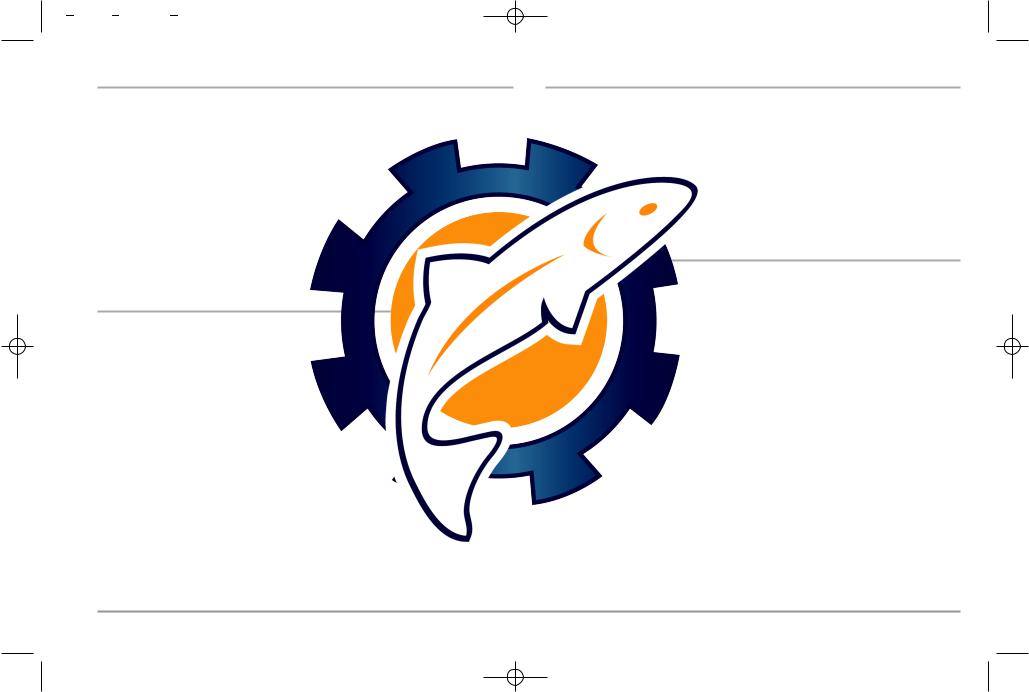
www98x Manual..reelsche531376-1 A.qxd m2/23/2005atic11:39..coAM mPage 7
900 SERIES™ INTRODUCTION
Your 900 Series™ Ultra Wide Screen Fishing System comes in several different configurations. See the following list of products, all of which are covered by this manual, to find your 900 Series™ configuration:
NOTE: Only the 987c SI Combo model comes with GPS and built-in cartography.
•Humminbird® 981c SI: Ultra-Wide Screen Fishing System with Side Imaging and Dual Frequency Transducer, optional GPS support
•Humminbird® 987c SI Combo: Ultra-Wide Screen Fishing System with Chartplotter (Maps) and Side Imaging and Dual Frequency Transducer, GPS Receiver included.
HOW THE 900 SERIES™ WORKS
Sonar technology is based on sound waves. The 900 Series™ Fishing System uses sonar to locate and define structure, bottom contour and composition, as well as depth directly below the transducer. Your 900 Series™ Fishing System sends a sound wave signal and determines distance by measuring the time between the transmission of the sound wave and when the sound wave is reflected off of an object; it then uses the reflected signal to interpret location, size, and composition of an object. Sonar is very fast. A sound wave can travel from the surface to a depth of 240 ft (70 m) and back again in less than ¼ of a second. It is unlikely that your boat can "outrun" this sonar signal.
SIDE IMAGING SONAR
Your 900 Series™ 987c SI Combo and 981c SI use Side Imaging sonar to provide a wide yet precise survey of a large area of water, including detailed bottom topography and fish-attracting structure orientation. The Side Imaging transducer returns are processed into an image similar to an aerial photograph. Typically, the Side Imaging sonar searches an area that is 240 feet wide, with a depth limitation of 100 feet. See
What’s on the Side Imaging Display and Understanding Side Imaging for more information.
DUALBEAM PLUS™ SONAR
Your 900 Series™ is shipped with a 200/50 kHz DualBeam PLUS™ sonar system with a wide (74°) area of coverage. DualBeam PLUS™ sonar returns can be blended together, viewed separately or compared side-by-side. DualBeam PLUS™ is ideal for a wide range of conditions - from shallow to very deep water in both fresh and salt water. Depth capability is affected by such factors as boat speed, wave action, bottom hardness, water conditions and transducer installation.
1
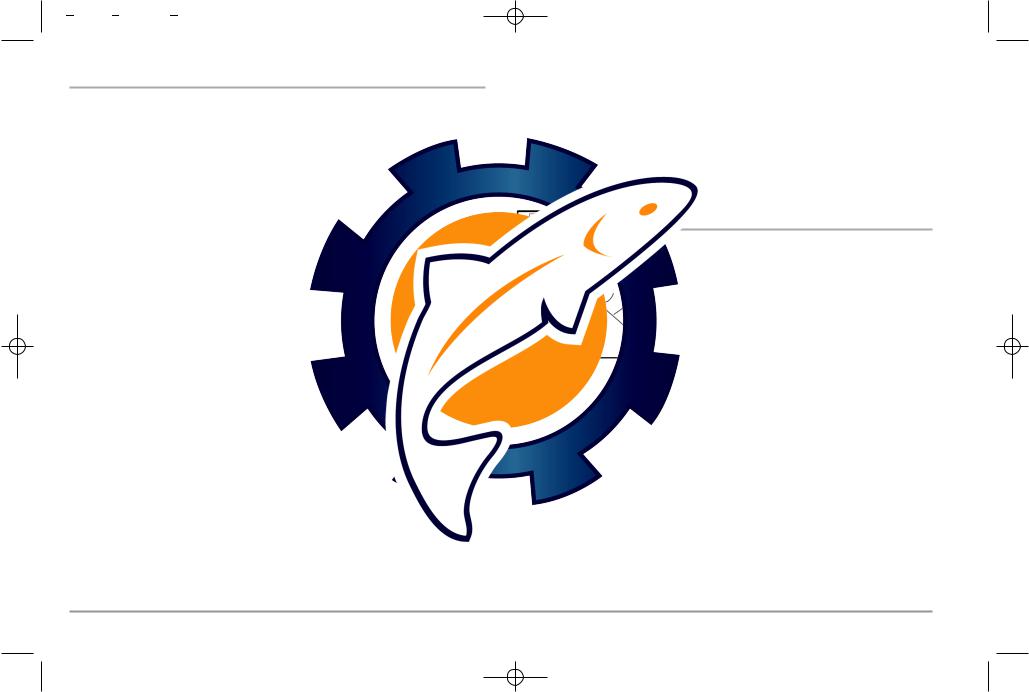
www98x Manual..reelsche531376-1 A.qxd m2/23/2005atic11:39..coAM mPage 8
GPS AND CARTOGRAPHY |
(With 987c SI Combo models only) |
Your 987c SI Combo model uses GPS and sonar to determine your position, display it on a grid, and provide detailed underwater information. The Global Positioning System (GPS) is a satellite navigation system designed and maintained by the U.S. Department of Defense. GPS was originally intended for military use; however, civilians may also take advantage of its highly accurate position capabilities, typically within +/- 10 meters, depending on conditions. This means that 95% of the time, the GPS receiver will read a location within 10 meters of your actual position. The GPS Receiver also uses information from WAAS (the Wide Area Augmentation System), EGNOS (the European Geostationary Navigation Overlay Service), and MSAS (the MTSAT Satellite Augmentation System) satellites if they are available in your area.
GPS uses a constellation of satellites that continually send radio signals to the earth. Your present position is determined by receiving signals from up to 12 satellites and measuring the distance from the satellites. The GPS Receiver allows you to combine easy-to-use FishingGPS™ chartplotter and navigation capabilities with advanced fishfinding. The following GPS functionality is currently supported by the 987c SI Combo model when it is connected to a GPS Receiver:
•View current position
•View current track (breadcrumb trail)
•View precision speed and heading from your GPS receiver
•Save tracks, waypoints and routes
•Travel a route and navigate from one waypoint to the next.
NOTE: Only the 987c SI Combo models support Navionics® Gold Charts marine cartography and Navionics® HotMaps™ 2004 Gold for inland fishing. The 900 Series™ does not support Navionics® Classic Charts.
The 987c SI Combo models also come with a built-in World map with a more detailed map of North America (Domestic models) or a more detailed map of Europe and Southeast Asia, including Australia and New Zealand (International models).
Your 987c SI Combo model uses the GPS Receiver to determine the position of the boat automatically, and uses the zoom level settings on a particular view to select the best chart to display. See Viewing Cartography for more information.
MULTI-MEDIA CARD (MMC)/SD SLOT
Multi-Media Card
(MMC/SD) Slot
The 900 Series™ 987c SI Combo models support cartography, and have two multi-media card (MMC)/SD slots. Optional-purchase MMC and/or SD cards can contain additional detailed maps. You can also export navigation data from your unit onto an MMC/SD card (see Navigation Main Menu: Export All Nav Data). If you insert an MMC or SD card that contains a more detailed chart for a particular location, your unit will retrieve that chart and display it automatically.
981c SI models have one MMC/SD slot and do not support cartography.
On any model, use the MMC/SD cards to update the software version of your control head. To update the software in your control head, plug in the appropriate MMC/SD card that contains a software update file; the unit will recognize it, will tell you what software version your control head is currently running, and will ask you if you want to update the software in the unit to match that on the MMC/SD card. You can obtain software updates from the www.humminbird.com website.
2
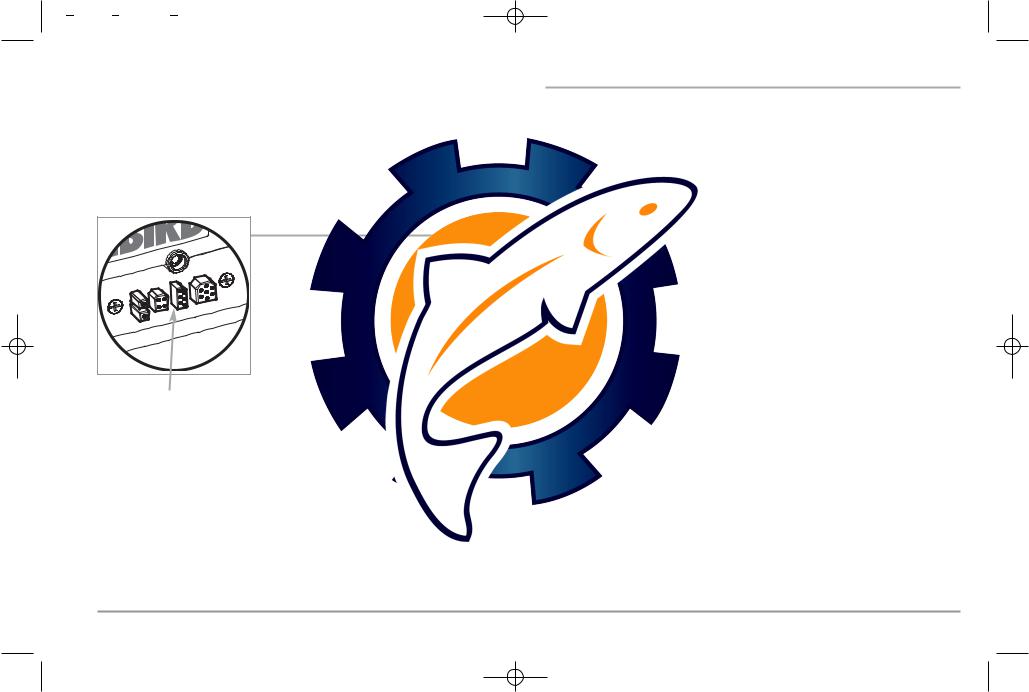
www98x Manual..reelsche531376-1 A.qxd m2/23/2005atic11:39..coAM mPage 9
Use the illustration to locate the position of the MMC and SD slot cover, remove the cover, and then insert an MMC and/or an SD card into one or both slots - either slot can accept either an MMC or an SD card. The label on both types of cards should face down and away from you so that you’re looking at the back of the card. Press down on the card until it clicks into place, then replace the slot cover and tighten the screw snugly - do NOT overtighten, as this will not improve water resistance, and may damage the cover.
ACCESSORY BUS
Use the Accessory Bus to expand the functionality of your 900 Series™. Accessories plug directly into the 900 Series™, enabling Advanced features such as WeatherSense® and the SmartCast® Wireless Sonar Link. Additional tabs and menu choices will be added to the menu system automatically when an accessory is plugged into the unit. In addition, multiple accessories can be attached simultaneously.
Accessory Bus |
See Accessories Menu Tab and 900 Series™ |
|
|
|
Accessories in this manual, as well as your accessory |
|
Operations Manual for additional details. |
|
|
NOTE: Accessories to enable WeatherSense® and the SmartCast® Wireless Sonar Link require separate purchases. You can visit our website at www.humminbird.com or contact our Customer Resource Center at 1-800-633-1468 for additional details.
INSTALLATION OVERVIEW
Please read all instructions that are relevant for your configuration before beginning the installation process.
NOTE: Installation procedures will depend on product configuration.
3
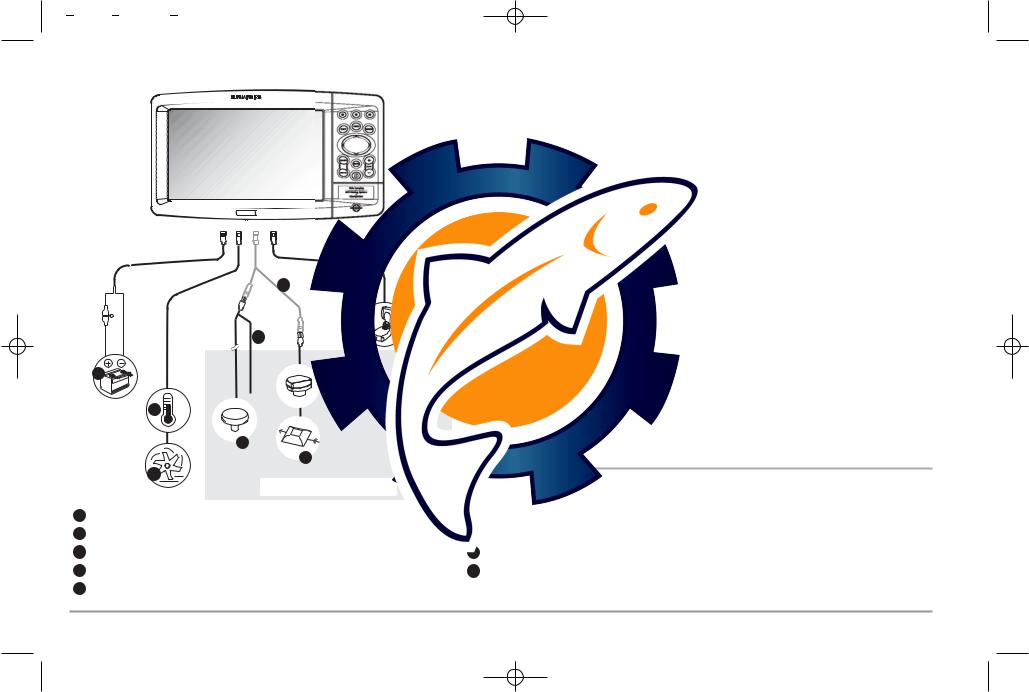
www98x Manual..reelsche531376-1 A.qxd m2/23/2005atic11:39..coAM mPage 10
The 900 Series™ has a wide variety of configurations.
987c
2
|
1 |
|
|
3 |
|
|
4 |
|
|
9 |
|
|
5 |
|
|
7 |
|
|
8 |
|
|
6 |
|
|
Accessory Bus |
|
|
Speed through water |
6 |
2 |
GPS Receiver |
7 |
3 |
WeatherSense® |
8 |
4 |
SmartCast® Wireless Sonar Link |
9 |
5
Inside the boat there is often a channel or conduit used for other wiring, this can be used to route cables. Be sure to route the cable as far as practical from the antenna cable of VHF radios or tachometer cables to reduce the possibility of interference. The transducer and GPS receiver cables should not be cut, and care should be used not to damage the cable insulation.
Basic installation tasks that you must perform include:
•Installing the control head (choosing either gimbal or in-dash mounting)
•Installing the transducer (choosing either the transom mount or trolling motor mounting method)
•Installing the GPS Receiver (if included)
•Installing the Speed accessory (if included)
•Testing the complete installation and locking the transducer position.
The supplied Humminbird® transducer uses a two piece kick-up mounting bracket. In addition, if you purchased a 987c SI Combo model, you will want to install the included GPS antenna.
NOTE: Accessories may require a separate purchase. You can visit our website at www.humminbird.com to order these accessories online or contact our Customer Resource Center at 1-800-633-1468.
CONTROL HEAD INSTALLATION
You have two choices for mounting your 900 Series™ control head:
•Gimbal mounting, where you use a surface on the boat, such as the dash, to mount the control head so that it can be tilted up or down, or
•In-dash mounting, where you cut a hole in the dash in order to allow the control head to be recessed into the dash, and the control head cannot be moved after mounting.
4
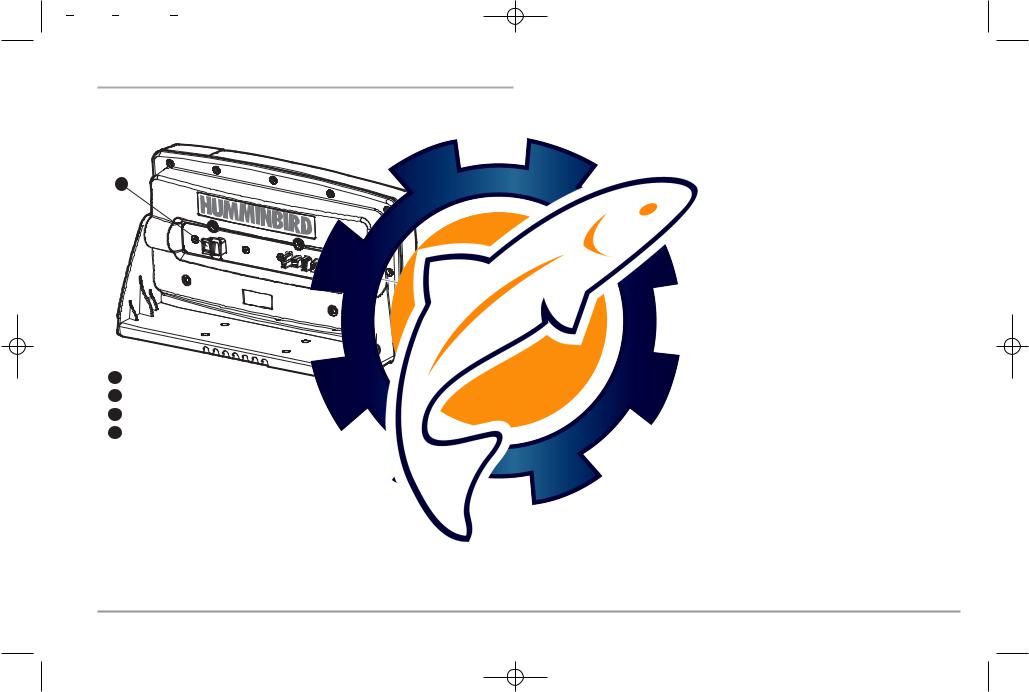
www98x Manual..reelsche531376-1 A.qxd m2/23/2005atic11:39..coAM mPage 11
GIMBAL MOUNTING THE CONTROL HEAD
If you are gimbal mounting the Humminbird® 900 Series™, you can pre-assemble the unit in order to plan the best mounting location.
4
1
2
3
1
2
3
4
Parts and tools specific to gimbal mounting are:
•Gimbal mounting bracket and screws
•Gimbal mounting knobs and washers
•Phillips head screwdriver
•5/16" (8mm) socket wrench or flat head screw driver
•Hand drill with various drill bits
•Marine-grade silicone sealant.
1.Place the control head into the gimbal bracket. Make sure that the straight side of the gimbal arm is against the back side of the control head.
2.Place a 1" (25 mm) diameter black washer on the gimbal knob and then thread the knob and washer into the housing. Tighten the gimbal knob to secure the 900 Series™ control head to the mount. Repeat step 2 for the other side.
You can now place the control head in various locations to decide which is best for mounting. Rotating the mounting bracket to the top of the control head will allow for overhead mounting. The chosen mounting area should allow for sufficient room so the controlheadcanpivotthroughthefulltiltrangeandallowforeasyremovalandinstallation.
NOTE: You can drill the cable pass hole underneath the gimbal bracket, allowing you to thread the cables through the knock-out holes in the mount; however, if you cannot drill the hole directly under the mounting bracket, then you will need to drill the cable pass hole behind the bracket, and will need to mount the hole cover there instead.
NOTE: When drilling holes in fiberglass hulls, it is best to start with a smaller bit and use progressively larger drill bits to reduce the chance of chipping or flaking the outer coating. Fill all holes with marine grade silicone sealant.
NOTE: You must have underside access to the mounting location to pass the cables through to the surface. Also, make sure that the mounting surface is adequately supported to protect the control head from excessive wave shock and vibration and provide visibility while in operation.
3.After the mounting location has been determined, loosen the gimbal knobs and remove the control head from the gimbal bracket.
NOTE: Alternate hole patterns are available underneath the gimbal mounting bracket, and may match existing holes on the boat. If you choose to use one of these alternate hole patterns, simply drill it out and use it to mount the bracket instead.
4.Place the gimbal bracket in the chosen position on the mounting surface and mark the four mounting screw locations using a pencil or center punch.
NOTE: Go to the installation instructions applicable to your transducer, GPS Receiver and accessories. Make the required installations and then run the cables to your control head mounting location. Do not cut any cabling (except the power cable). If your cables are too short, extensions are available from your local dealer or online from www.humminbird.com.
5
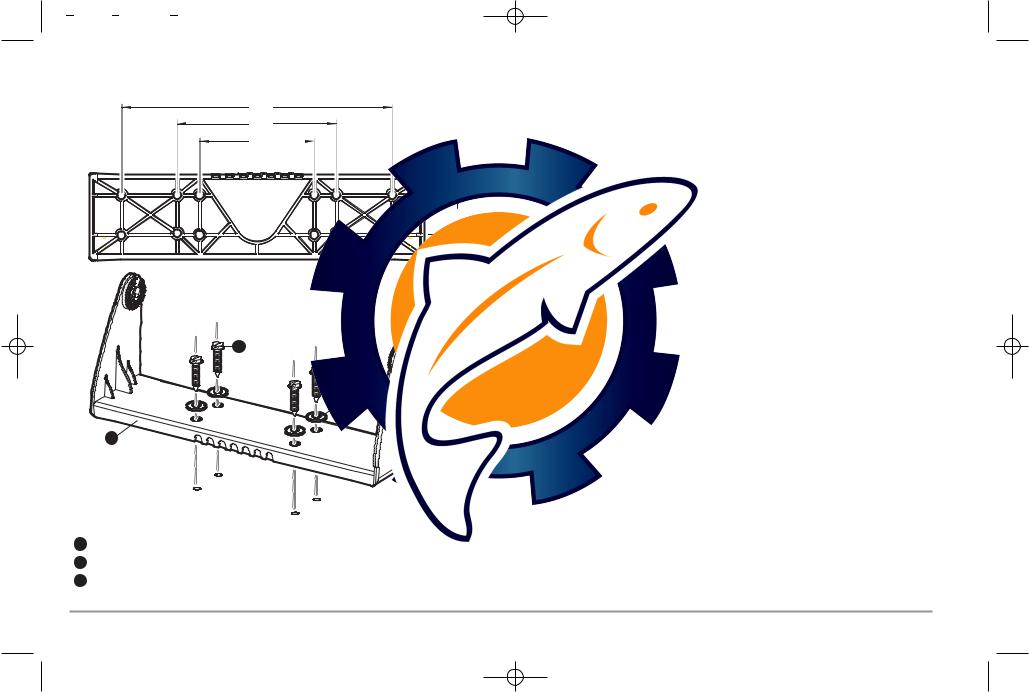
www98x Manual..reelsche531376-1 A.qxd m2/23/2005atic11:39..coAM mPage 12
5.Set the gimbal bracket aside and drill the four mounting screw holes using a 5/32" (4.0 mm) drill bit.
8.5" |
5" |
3.6" |
6a. If the cables must pass through a hole directly beneath the mounting bracket, mark and drill an additional 1" (25 mm) hole centered between the four mounting holes. Route the cables through the grommet, then press the grommet in place around the cables and into the 1" (25 mm) hole. Pass the cables out of the back of the mounting bracket. Using needle-nose pliers, break out the tabs on the rear of the mounting base. You will need to break out the cable tabs
1.25" |
for the number of cables you want to run to your control head. |
|
|
6b. |
If the cables cannot be routed directly beneath the mounting bracket, mark and |
|
|
|
drill a 1" (25 mm) hole that will allow you to run the cables close to the bracket. |
|
|
|
Pass the cables through the 1" (25 mm) hole, routing the cables through the |
|
|
|
grommet and pressing the grommet into place. Place the hole cover over the |
|
|
1 |
mounting surface hole, then use it to mark the position of the two mounting |
|
|
screws. Remove the hole cover, drill the two mounting holes using a 9/64" |
||
|
|
(3.5 mm) bit, fill them with marine-grade silicone, then replace the hole cover |
|
|
|
and insert the #8 Phillips countersink wood screws. Hand-tighten only. |
|
|
2 |
|
|
|
NOTE: Be sure that the cables pass through the slots on the hole cover or gimbal bracket |
||
3 |
break out tabs and there is enough cable slack to allow for the control head to pivot through |
||
its full tilt range. Extra cable slack will also help when connecting/disconnecting the cables. |
|||
|
|||
|
7. |
Place the mounting bracket on the mounting surface aligned with the drilled |
|
|
|
holes and fill the mounting holes with marine grade silicone. Insert the four #10 |
|
|
|
Slotted-Hex wood screws into the mounting holes. Hand-tighten only. |
|
1
2
3
6
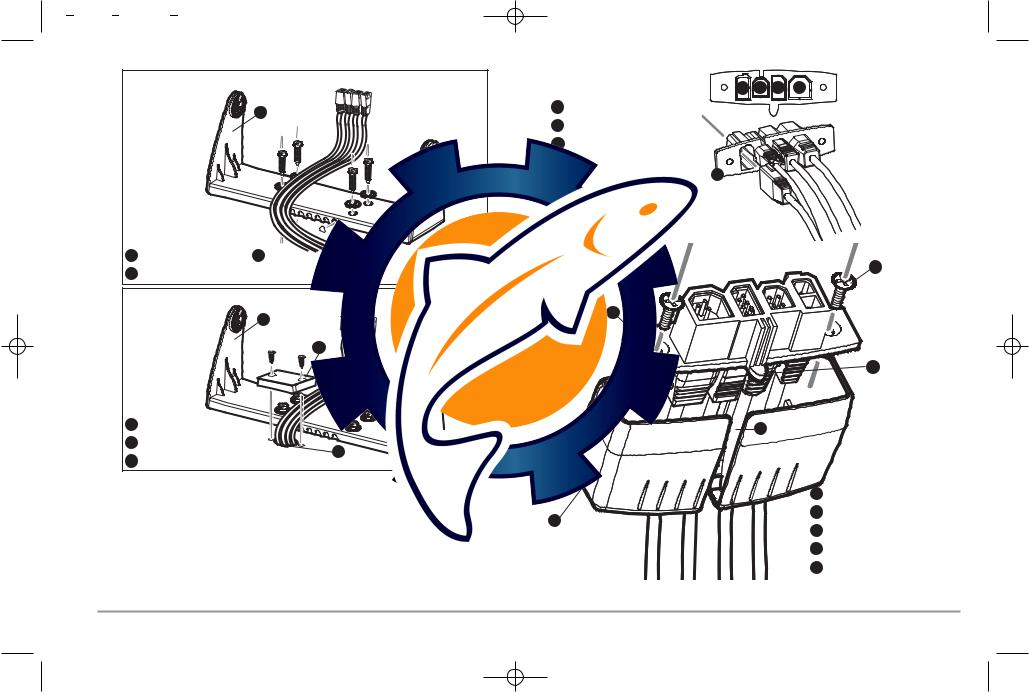
www98x Manual..reelsche531376-1 A.qxd m2/23/2005atic11:39..coAM mPage 13
Cables Routed Directly Beneath Mounting Bracket
1
1 2 

2
Cables Routed Near Mounting Bracket
1
3
1
2
2
3
8.Insert cable connectors into the proper recesses on the cable collector insert. The cable connectors are keyed to prevent reverse installation, so be careful not to force the connectors into the wrong slots. If you don’t have a cable for every hole in the insert, install the blank plugs to protect the control head from the weather.
1 2 3 4
1
2
3
5
2
1
4
5
3
Cover
Tab on
5
7
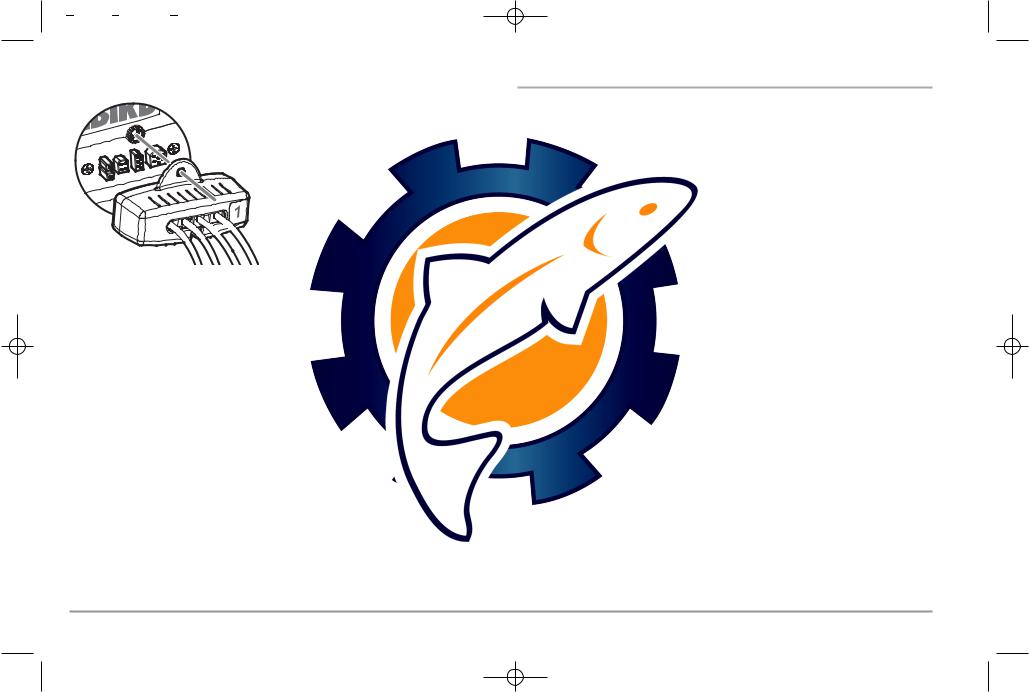
www98x Manual..reelsche531376-1 A.qxd m2/23/2005atic11:39..coAM mPage 14
Plug Cable Connector Assembly to Back of Control Head
9. While holding cables in place in the cable collector insert, thread the cables through the slot in the bottom of the cable collector cover, line up the cable collector insert and cover, then slide the cover into place on the insert.
NOTE: Tab on cable collector insert goes into slot on cover.
10. Attach the cable collector insert to the cable collector cover using the 2 Phillip screws provided.
11.Place the unit back onto the mounting bracket. Plug in the cable collector assembly to the back of the control head. Cable connectors and cable sockets are keyed to prevent reverse installation, so be careful not to force the connectors into the wrong sockets. Once the cable collector and all cables are plugged into the back of the control head, lock the assembly into place by threading the knurled screw into the threaded insert on the back of the housing. Adjust the control head to the desired viewing angle and secure by tightening the gimbal knobs.
NOTE: You may wish to dress the cabling with nylon wire ties in order to hold the cables together and create a cleaner assembly.
The Humminbird® 900 Series™ control head is now ready for operation.
IN-DASH MOUNTING THE CONTROL HEAD
If you are in-dash mounting the control head, start by placing the components on the surfaces where you intend to install them before installation. Make sure that the surfaces you have chosen provide adequate protection from wave shock, and that all cables can reach the control head.
NOTE: If a cable is too short for your application, extension cables are available. Call Humminbird® Customer Support at 1-800-633-1468 for more information.
Parts and tools specific to In-dash mounting are:
•In-dash mount bracket and threaded rods
•In-dash mounting foam pads
•In-dash mounting template
•Reciprocating saw for cutting dash material
•Masking tape to hold mounting template in place.
1.Locate a suitable, flat area of the dash to mount the control head. The control head requires a depth of at least 3 ½ inches (89 mm).
2.Tape the paper In-Dash Mounting template to the desired in-dash mounting location.
3.At a location inside the dotted line on the template, drill a hole large enough to insert blade of reciprocating saw. Carefully begin cutting toward the dotted line, then follow the dotted line around the template. Remove the template when finished.
4.Insert and tighten the two threaded rods into the two threaded inserts located on the back side of the control head. Peel off the adhesive-backed foam pads and place them on the back of the control head; make sure you notice the difference between the longer top/bottom and shorter side pads.
8
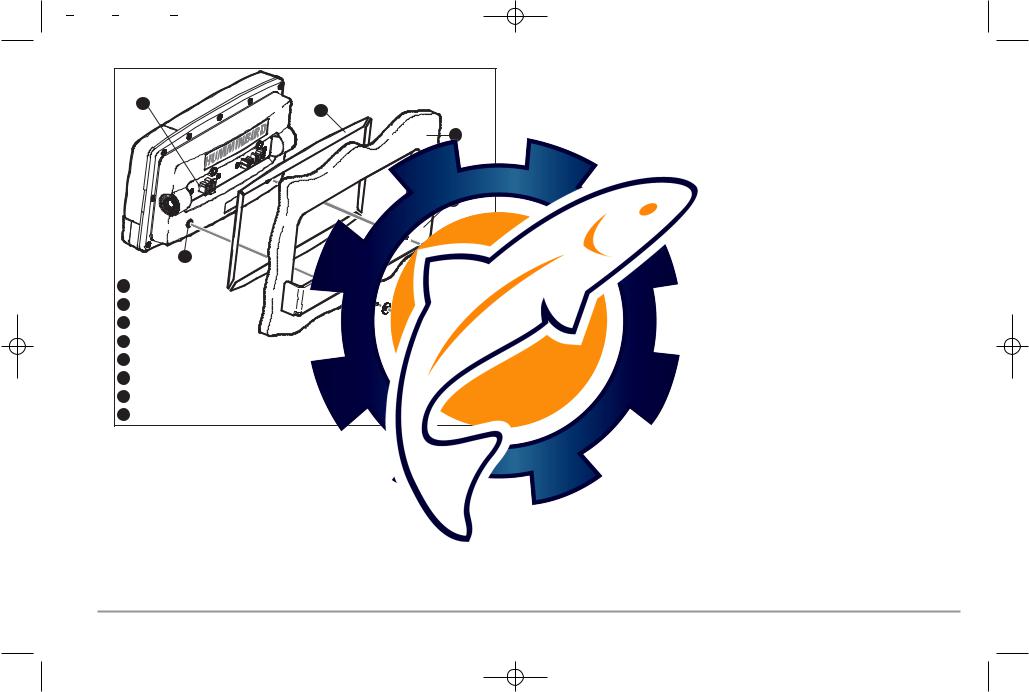
www98x Manual..reelsche531376-1 A.qxd m2/23/2005atic11:39..coAM mPage 15 |
||
|
8 |
1 |
|
|
|
|
|
3 |
|
|
2 |
|
|
7 |
1 |
|
4 |
2 |
|
|
|
|
|
3 |
|
6 |
4 |
|
|
5 |
|
|
6 |
|
|
7 |
|
|
8 |
|
|
5.Insert the control head through the mounting hole from the front side of the dash. From the back side of the dash, align the two threaded rods on the rear of the housing with the two holes on the in-dash mounting bracket. Place a washer onto each threaded rod, then secure bracket by placing a wing nut onto each threaded rod and tighten fully.
6.Insert cable connectors into the proper recesses on the cable collector insert. The cable connectors are keyed to prevent reverse installation, so be careful not to force the connectors into the wrong slots. If you don’t have a cable for every hole in the insert, install the blank plugs to protect the unit from the weather.
7.While holding cables in place in the cable collector insert, thread the cables through the slot in the bottom of the cable collector cover, line up the cable collector insert and cover, then slide the cover into place on the insert.
NOTE: The tab on the cable collector insert goes into the slot on the cover.
8.Attach the cable collector insert to the cable collector cover using the 2 Phillip screws provided.
9.Plug the cable collector assembly into the back of the control head. Cable connectors and cable sockets are keyed to prevent reverse installation, so be careful not to force the connectors into the wrong sockets. Once the cable collector and all cables are plugged into the back of the control head, lock the assembly into place by threading the knurled screw into the threaded insert on the back of the housing. (Cable ties are provided to help you secure the cables in place by threading them through the available holes on the in-dash bracket).
NOTE: It is very important that the cable collector is used and secured in place in the In-Dash installation.
9
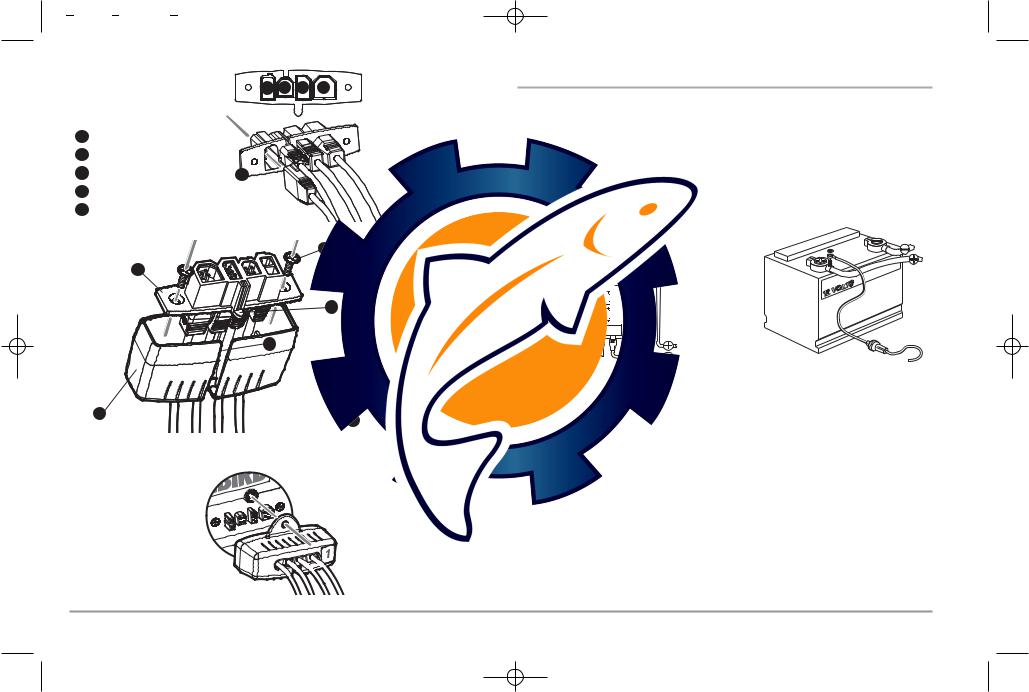
www98x Manual..reelsche531376-1 A.qxd m2/23/2005atic11:39..coAM mPage 16
CONNECTING THE CONTROL HEAD POWER CABLE TO THE BOAT
|
1 |
2 |
3 |
4 |
|
|
|
|
A 6' (2 m) long power cable is included to supply power to the control head. You may |
|
|
|
|
shorten or lengthen the cable using 18 gauge multi-stranded copper wire. |
1 |
|
|
|
CAUTION: Some boats have 24 or 36 Volt electric systems, but the control head MUST be |
2 |
|
|
|
|
|
|
|
connected to a 12 VDC power supply. |
|
3 |
5 |
|
|
The control head power cable can be connected to the electrical system of the boat at one |
4 |
|
|
|
|
|
|
|
|
of two places: a fuse panel usually located near the console, or directly to the battery.
5
1 |
POSITIVE |
|
|
|
4 |
|
GROUND |
5 |
1 |
|
|
|
2 |
NOTE: Make sure that the power cable is disconnected from the control head at the |
|
|
3 |
||
|
beginning of this procedure. |
||
|
4 |
||
3 |
|
||
5 |
1a. If a fuse terminal is available, use crimp-on type electrical connectors (not |
||
|
|||
|
|
included) that match the terminal on the fuse panel. Attach the black wire to |
|
Plug the Cable Connector Assembly to the Back of the Control Head |
ground (-), and the red wire to positive (+) 12 VDC power. |
||
|
|
1b. If you need to wire the control head directly to a battery, obtain and install an |
|
|
|
inline fuse holder and a 2.5 to 3 Amp fuse (not included) for the protection of the |
|
|
|
unit. Humminbird® is not responsible for over-voltage or over-current failures. |
|
NOTE: In order to minimize the potential for interference with other marine electronics, a separate power source (such as a second battery) may be necessary.
You are now ready to install the transducer. Find the section that refers to your specific transducer installation method.
10
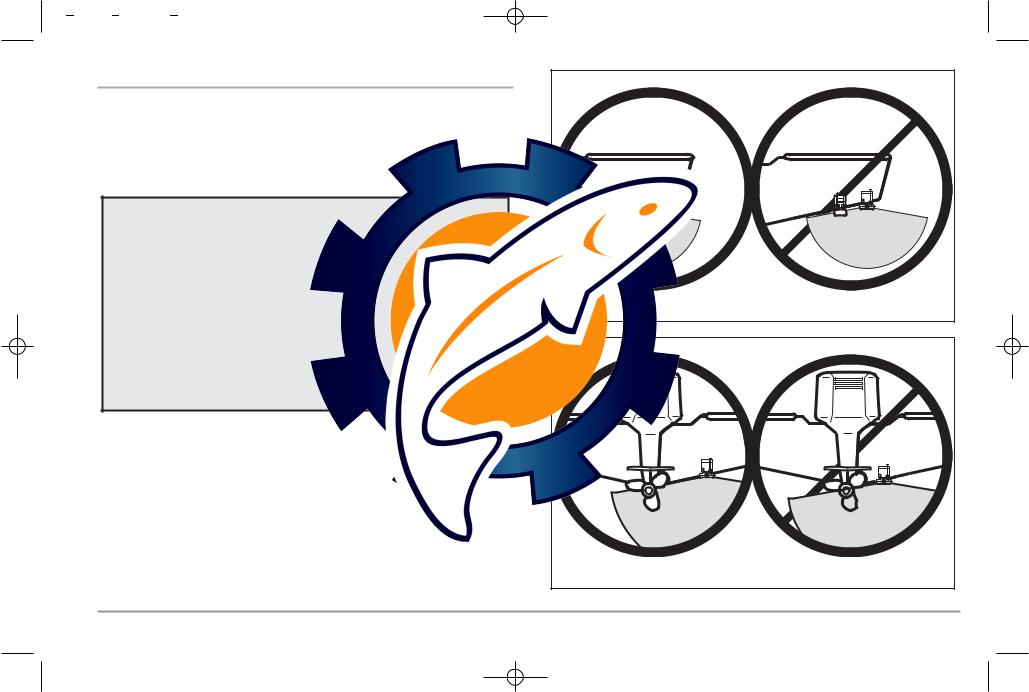
www98x Manual..reelsche531376-1 A.qxd m2/23/2005atic11:39..coAM mPage 17
TRANSDUCER INSTALLATION
There are two different installation methods for your transducer:
•Transom Transducer
•Trolling Motor Transducer.
Find the section that describes the method of installation you will be using.
The Side Imaging transducer has some special requirements because of its side viewing capabilities:
•The Side Imaging transducer must NOT have anything obstructing the ‘view’ of the side looking beams, i.e. nothing can be in the line of sight of these beams (not a hull, motor, or other transducer, etc).
NOTE: You may need to tilt the motor up and out of the way when using the side looking beams.
•In order for the side beams to be displayed accurately, the transducer must be mounted so that it is looking straight down in the water when the boat is in the water.
|
Transducer Position |
|
Correct transducer position |
Incorrect transducer position, |
|
interfering with the side beams |
||
|
Motor Position
Motor is far enough forward |
Motor is not far enough forward, |
|
interfering with the side beams |
||
|
11
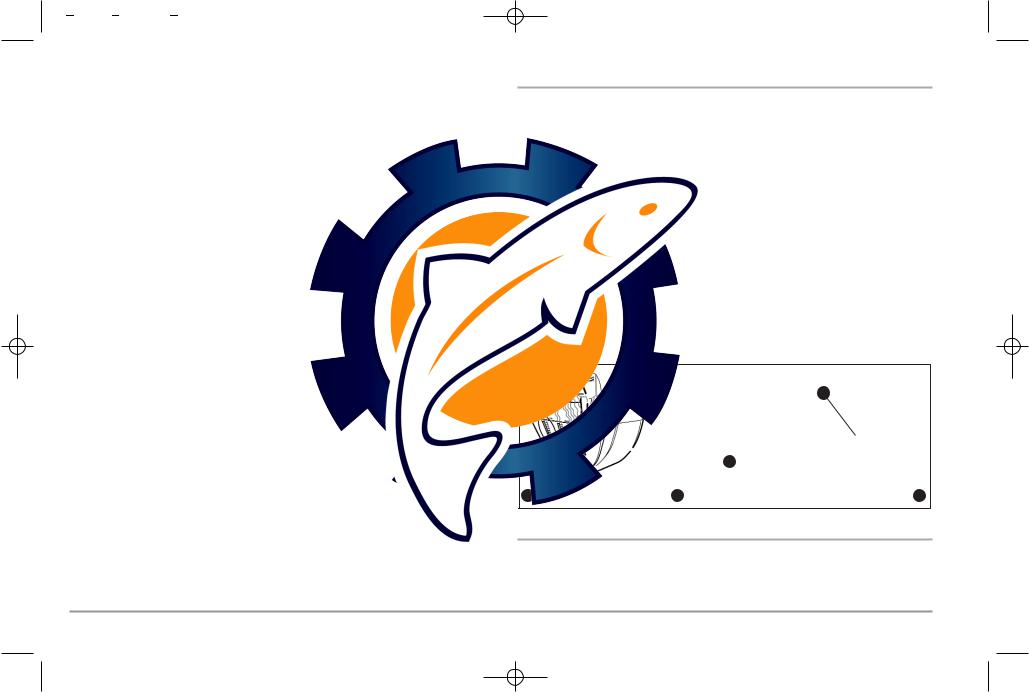
www98x Manual..reelsche531376-1 A.qxd m2/23/2005atic11:39..coAM mPage 18
NOTE: Rough seas also can affect the readings of the Side Imaging transducer.
NOTE: The transducer must be mounted at least 15” from the propeller to avoid interference from the motor.
NOTE: If the included transducer will not work for your application, you may exchange it, NEW and UNASSEMBLED, with mounting hardware included, for a transducer appropriate for your application - often at very little or no charge depending on the transducer. Call the Humminbird® Customer Resource Center (1-800-633-1468) for details and pricing, or visit www.humminbird.com,Product Support/Transducer Exchange for more information.
NOTE: Due to the wide variety of hulls, only general instructions are presented in this installation guide. Each boat hull represents a unique set of requirements that should be evaluated prior to installation. In addition to the parts supplied, you will need a hand drill with various bits, a socket wrench (5/16" or 8 mm) a Phillips head screwdriver, and marinegrade silicone sealant.
NOTE: When drilling holes in fiberglass hulls, it is best to start with a smaller bit and use progressively larger drill bits to reduce the chance of chipping or flaking the outer coating. Fill all holes with marine grade silicone sealant.
WARNING: Do not touch an active transducer during operation, as this may cause physical discomfort and may result in personal injury in the form of tissue damage. Handle the transducer only when the power to the control head is off.
TRANSOM TRANSDUCER INSTALLATION
If you will be installing a transom mounted transducer, use the procedures in this section. There are two pieces to the transducer mount assembly: the pivot, and the bracket. Your transducer comes with a two-piece metal and plastic bracket assembly. There are several procedures you will have to perform in order to install a transommounted transducer. They are:
•Determine transducer mounting location
•Mount the bracket to the boat
•Attach the pivot to the transducer
•Mount the transducer pivot assembly to the bracket
•Adjust the running position of the transducer
•Route the transducer cable
•Perform a final test of the transom transducer installation.
Stepped Hull
3
1 |
|
2 |
|
|
|
1 |
2 |
Step 3 |
To determine transducer mounting location:
NOTE: If transom mounting is not possible because of a stepped hull or cavitation noise, trolling motor installation may be an option. See Trolling Motor Transducer Installation for more information.
12
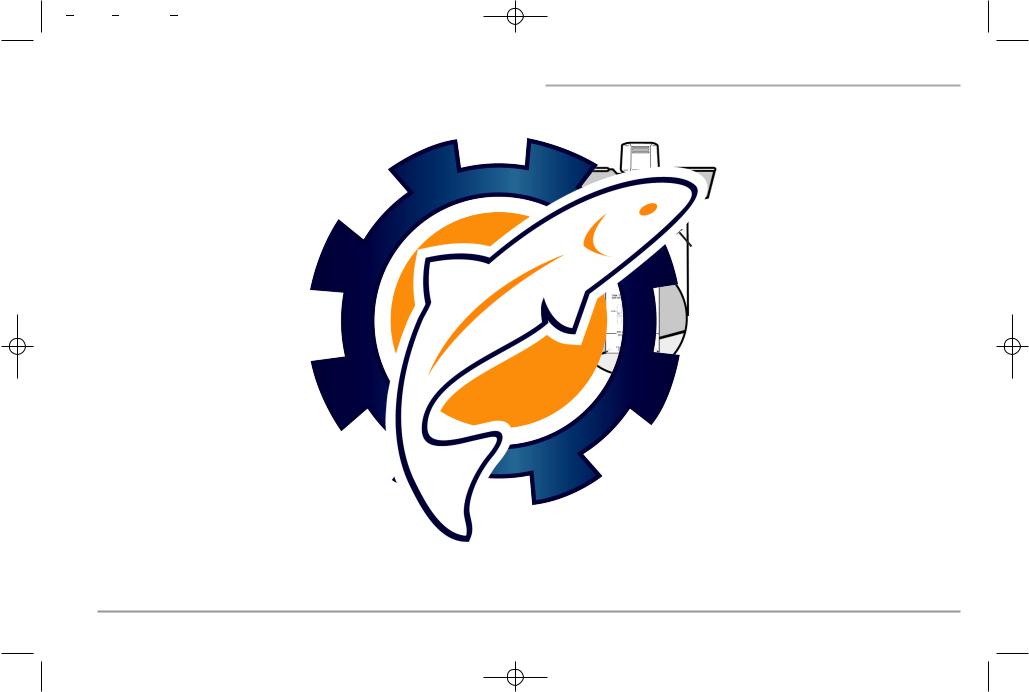
www98x Manual..reelsche531376-1 A.qxd m2/23/2005atic11:39..coAM mPage 19
1.First, determine the best location on the transom to install the transducer. Consider the following to find the best location:
•It is very important to locate the transducer in an area which is relatively free of turbulent water. As a boat moves through the water, turbulence is generated by the weight of the boat, and the thrust of the propeller(s) - either clockwise or counter-clockwise. This turbulent water is normally confined to areas immediately aft of ribs, strakes or rows of rivets on the bottom of the boat, and in the immediate area of the propeller(s). Clockwise propellers create more turbulence on the port side. On outboard or inboard/outboard boats, it is best to locate the transducer at least 15" (380 mm) to the side of the propeller(s).
•The best way to locate turbulence-free water is to view the transom while the boat is moving. This method is recommended if maximum high-speed operation is a high priority. If this is not possible, select a location on the transom where the hull forward of this location is smooth, flat and free of protrusions or ribs.
•The hydrodynamic shape of your transducer allows it to point straight down without deadrise adjustment.
•On boats with stepped hulls, it may be possible to mount the transducer on the step. Do not mount the transducer on the transom behind a step to avoid popping the transducer out of the water at higher speeds; the transducer must remain in the water for the control head to maintain the sonar signal.
•If the transom is behind the propeller(s), it may be impossible to find an area clear from turbulence, and a different mounting technique or transducer type should be considered (see Trolling Motor Transducer Installation).
•The Side Imaging transducer must NOT have anything obstructing the ‘view’ of the side looking beams, i.e. nothing can be in the line of sight of these beams (not a hull, motor, or other transducer, etc).
To mount the transducer bracket to the boat:
1.Remove the transducer mounting template from this manual. See Appendix A for the Transducer Mounting Template.
Level |
15” (380 mm) |
|
from prop(s) |
||
|
2. Hold the template on the transom of the boat in the location where the transducer will be installed. Align the template vertically, matching the lower edge of the transom with the bottom corner of the template. If your propeller moves clockwise as the boat moves forward, mount the transducer on the starboard side, and use the bottom left corner of the template. If your propeller moves counterclockwise as the boat moves forward, mount the transducer on the port side, and use the bottom right corner of the template.
3.Using a pencil or punch, mark the three mounting holes on the transom. Do not mark or drill any other holes at this time.
4.Using a 5/32" (4.0 mm) bit, drill the three holes to a depth of approximately 1" (25 mm). On fiberglass hulls, it is best to use progressively larger drill bits to reduce the chance of chipping or flaking the outer coating. Use a marine-grade silicone sealant to fill the drilled holes.
13
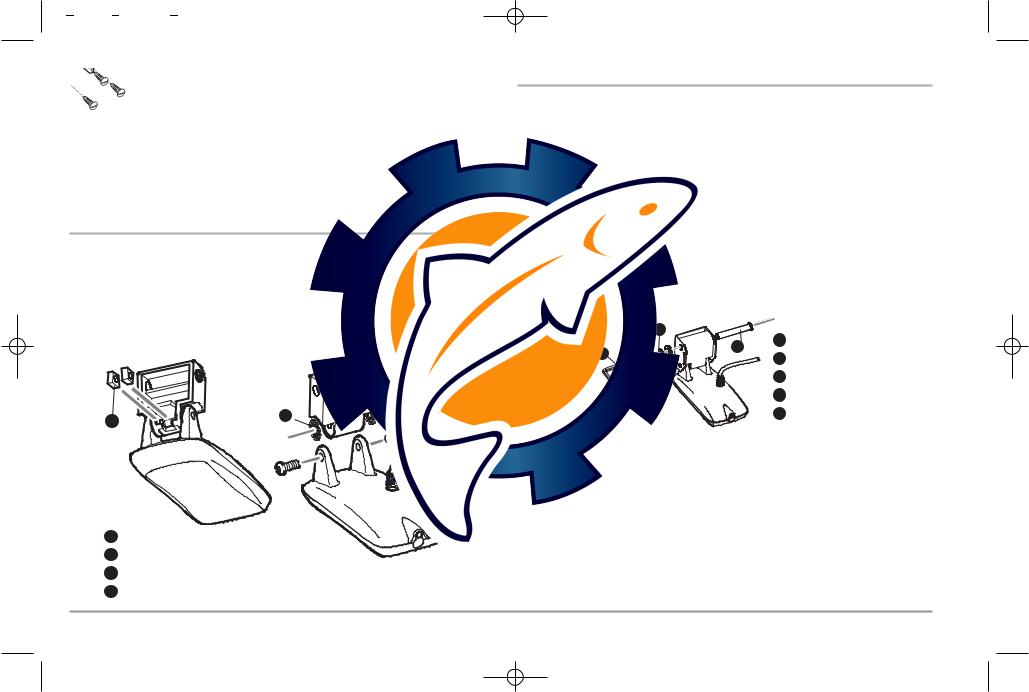
www98x Manual..reelsche531376-1 A.qxd m2/23/2005atic11:39..coAM mPage 20
5. Align the metal mounting bracket with the mounting holes. The center slot should be above the two outer slots. (This bracket and all other hardware supplied is top quality stainless steel for maximum strength and corrosion protection.) Insert the three 1" (25 mm) flat head wood screws into the drilled holes, but do not
completely tighten.
Attaching the Bracket
To attach the pivot to the transducer:
1.Attach the pivot to the transducer body, using the two 1/4"-20 x 5/8" (16 mm) machine screws, toothed washers, and square nuts. The toothed washers must fit on the inside of the transducer ears, between the pivot and the ears. The square nuts will be prevented from rotating by the pocket in the back of the pivot. An Allen wrench is provided which fits all the 1/4"-20 screws, but do not fully tighten the screws at this time.
|
|
3 |
1 |
2 |
4 |
|
||
|
|
1 |
|
2 |
|
3 |
Attach the Pivot |
4 |
|
To mount the transducer pivot assembly to the bracket:
1.Slide the assembled transducer into the metal bracket from the bottom, aligning the large hole at the top of the bracket with the hole in the pivot.
2.Insert the headed pin through the pivot holes in the bracket and pivot. The headed pin can be inserted from either side of the bracket.
3.Place the nylon washer over the opposite end of the headed pin. Place the stainless washer over the 1/4"-20 x 5/8" (16 mm) screw threads, then insert into the opposite end of the headed pin and finger tighten only. The screw has a thread locking compound on the threads to prevent loosening, and should not be fully tightened until all adjustments are made.
NOTE: The running position of the transducer is now completely adjustable. Subsequent adjustment may be necessary to tweak the installation after high speed testing.
1 |
5 |
|
3 |
|
2 |
|
2 |
|
|
|
|
|
4 |
3 |
|
|
4 |
|
|
5 |
14
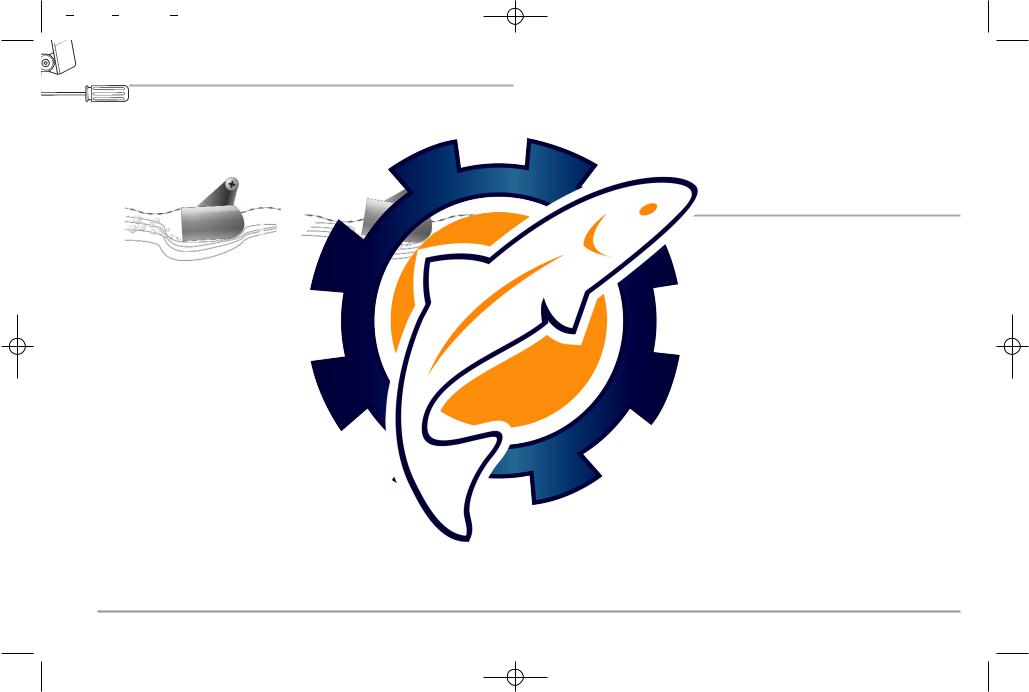
www98x Manual..reelsche531376-1 A.qxd m2/23/2005atic11:39..coAM mPage 21
To adjust the running position of the transducer:
The transducer mounting bracket allows height and tilt adjustment, while the pivot bolt allows angular adjustment. These adjustments will help reduce cavitation. Initially, adjust the transducer as described in the following paragraphs. Further adjustment may be necessary to refine the installation after high-speed testing.
Normal Cavitation |
Cavitation that will cause |
|
erratic sonar readings |
1.First, adjust the pivot angle of the transducer body, so it is parallel with the length of the hull of the boat.
2.Fully tighten the two pivot screws, using the supplied Allen wrench. Access to the pivot screws is provided by the lower holes in the side of the mounting bracket. It may be necessary to re-tighten the pivot bolt after initial use as the plastic may still be conforming to the pressure from the lock washers.
3.Adjust the height of the assembly so the face of the transducer is 1/8" (3 mm) to 1/4" (6 mm) beneath the bottom of the transom, and fully tighten the three mounting screws.
4.In order to gain access to the mounting screws, the
transducer assembly must be pivoted up in the bracket as Tighten the Mounting Screws shown. Be careful not to alter the running angle as some
force is necessary to pivot the assembly.
5.If access to the top mounting hole is not possible due to the selected height of the transducer, fully tighten the two lower screws, then simply remove the headed pivot pin and the transducer assembly, and tighten the top screw, then reassemble.
6.Confirm that the pivot angle has not changed and that all mounting screws are fully tightened.
To route the transom transducer cable:
The transducer cable has a low profile connector that must be routed to the point where the control head is mounted. There are several ways to route the transducer cable to the area where the control head will be installed. The most common procedure routes the cable through the transom into the boat.
NOTE: Your transducer may not look exactly like the transducer shown in the illustrations, but it will mount in exactly the same way.
NOTE: Your boat may have a pre-existing wiring channel or conduit that you can use for the transducer cable.
1.Unplug the other end of the transducer cable from the control head. Make sure that the cable is long enough to accommodate the planned route by running the cable over the transom.
CAUTION! Do not cut or shorten the transducer cable, and try not to damage the cable insulation. Route the cable as far as possible from any VHF radio antenna cables or tachometer cables to reduce the possibility of interference. If the cable is too short, extension cables are available to extend the transducer cable up to a total of 50' (15 m). For assistance, contact the Customer Resource Center at www.humminbird.com or call 1-800-633-1468 for more information.
NOTE: Since the transducer may need to pivot up to 90° in the bracket if it strikes an object, make sure there is sufficient cable slack to accommodate this motion. It is best to route the cable to the side of the transducer so the cable will not be damaged by the rotation of the transducer.
15
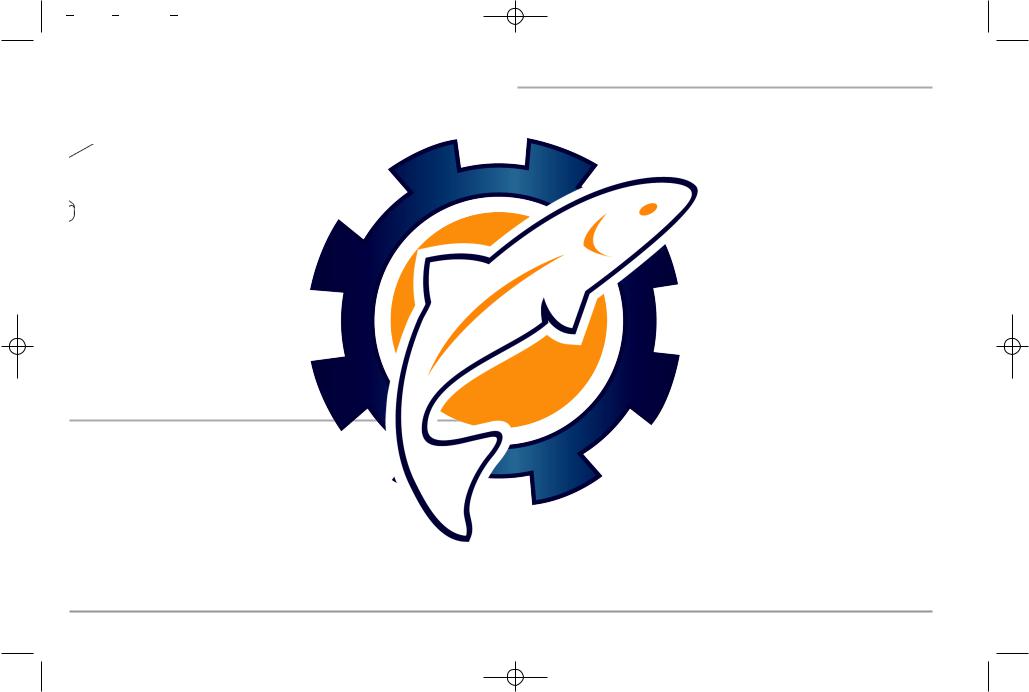
www98x Manual..reelsche531376-1 A.qxd m2/23/2005atic11:39..coAM mPage 22
2.If you will be routing the cable through a hole in the transom, drill a 5/8" diameter (16 mm) hole above the waterline. Route the cable through this hole, then fill the hole with marine-grade silicone sealant and proceed to the next step immediately.
3.Place the escutcheon plate over the cable hole and use it as a guide to mark the two escutcheon plate mounting holes. Remove the plate, drill two 9/64" (3.5 mm) holes, then fill both holes with marine-grade silicone sealant. Place the escutcheon plate over the cable hole and attach with two #8 x 5/8" (16 mm) wood screws.
4.Route and secure the cable by attaching the cable clamp to the transom; drill one 9/64" dia. (3.5 mm) x 5/8" deep (16 mm) hole, then fill hole with marine-grade silicone sealant, then attach the cable clamp using a #8 x 5/8" (16 mm) screw.
5.Plug the other end of the transducer cable back into the control head connection holder.
To perform a final test of the transom transducer installation:
After transom transducer installation, please perform the final testing and then finalize the installation (see Test and Finish the Transducer Installation).
TROLLING MOTOR TRANSDUCER INSTALLATION
If you want to install the transducer on a trolling motor, use this procedure. Several styles of the transducer are compatible with trolling motor mounting. If you have a trolling motor bracket, refer to the separate installation instructions that are included with the bracket.
NOTE: After trolling motor transducer installation, please perform the final testing and then finalize the installation (see Test and Finish the Transducer Installation).
If you don’t have a trolling motor transducer, there are several options:
•You may purchase a Trolling Motor Adapter kit that will allow you to mount the transducer on the trolling motor.
•You may also exchange your NEW and UNASSEMBLED transducer (with mounting hardware included) for a trolling motor transducer.
There are also several transducer switches available that support the following configurations:
•Two control heads with one transducer
•Two transducers with one control head.
NOTE: Call the Humminbird® Customer Resource Center (1-800-633-1468) for details and pricing, or visit www.humminbird.com for more information.
16
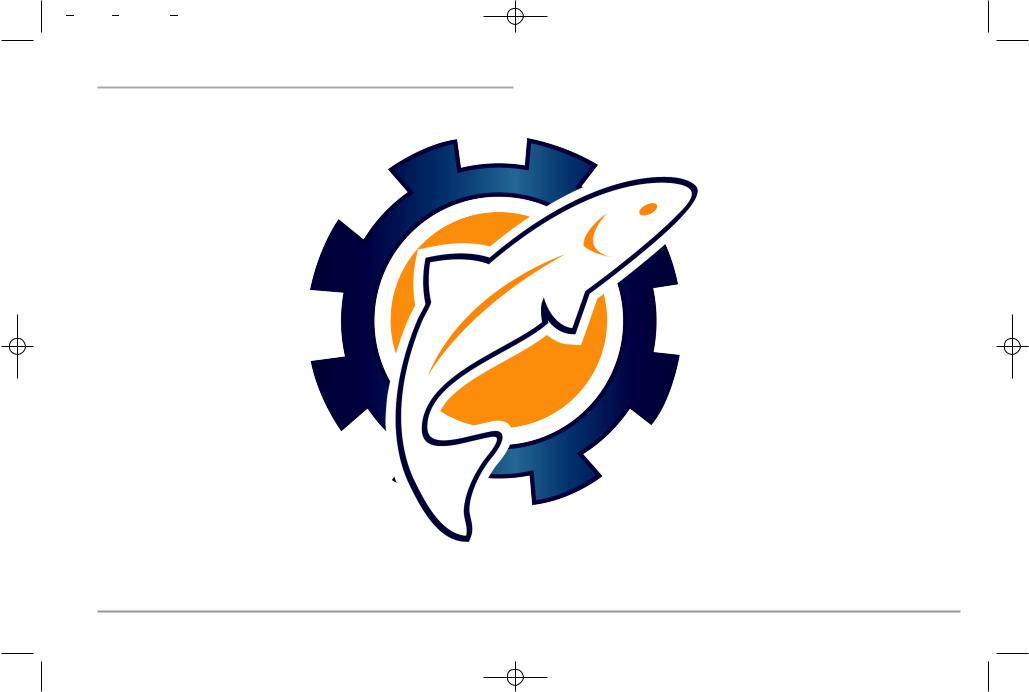
www98x Manual..reelsche531376-1 A.qxd m2/23/2005atic11:39..coAM mPage 23
TEST AND FINISH THE TRANSDUCER INSTALLATION
When you have installed both the control head, the transducer, and accessories and have routed all the cables, you must perform a final test before locking the transducer in place. Testing should be performed with the boat in the water, although you can initially confirm basic operation with the boat out of the water.
1.Press the POWER/LIGHT key once to turn the control head on. There will be an audible chirp when the key is pressed correctly. If the unit does not power-up, make sure that the connector holder is fully seated and that power is available.
2.If all connections are correct and power is available, the control head will enter Normal operation. If no transducer is detected (or one is not connected), the unit will go into Simulator mode and will indicate this by displaying the word Simulator on the control head display.
NOTE: The transducer must be submerged in water for reliable transducer detection.
3.If the bottom is visible on-screen with a digital depth readout, the unit is working properly. Make sure that the boat is in water greater than 2 ft (.6 m) but less than the depth capability of the unit, and that the transducer is fully submerged, since the sonar signal cannot pass through air.
4.If the unit is working properly, gradually increase the boat speed to test highspeed performance. If the unit functions well at low speeds but begins to skip or miss the bottom at higher speeds, the transducer requires adjustment. Angling the rear of the transducer downward and/or lowering the transducer farther into the water will help achieve depth readings at high speeds. If the left side of the fish arch is longer than the right side, then the back of the transducer is angled too far downward. If the right side of the fish arch is longer than the left side, then the back of the transducer is angled too far upwards.
NOTE: It may not always be possible to get symmetrical fish arches and high speed depth readings at the same time. Due to the wide variety of boat hulls, however, it is not always possible to obtain high speed depth readings.
NOTE: It is often necessary to make several incremental transducer adjustments before optimum high speed performance is achieved.
Once you have reached a consistently good sonar signal at the desired speeds, you are ready to lock down the transducer settings.
5.Mark the transducer bracket location on the transom with a pencil, then pop up the bracket to reveal the mounting screws. Tighten the stainless steel mounting bracket screws to secure in place.
Hand-tighten only!
17
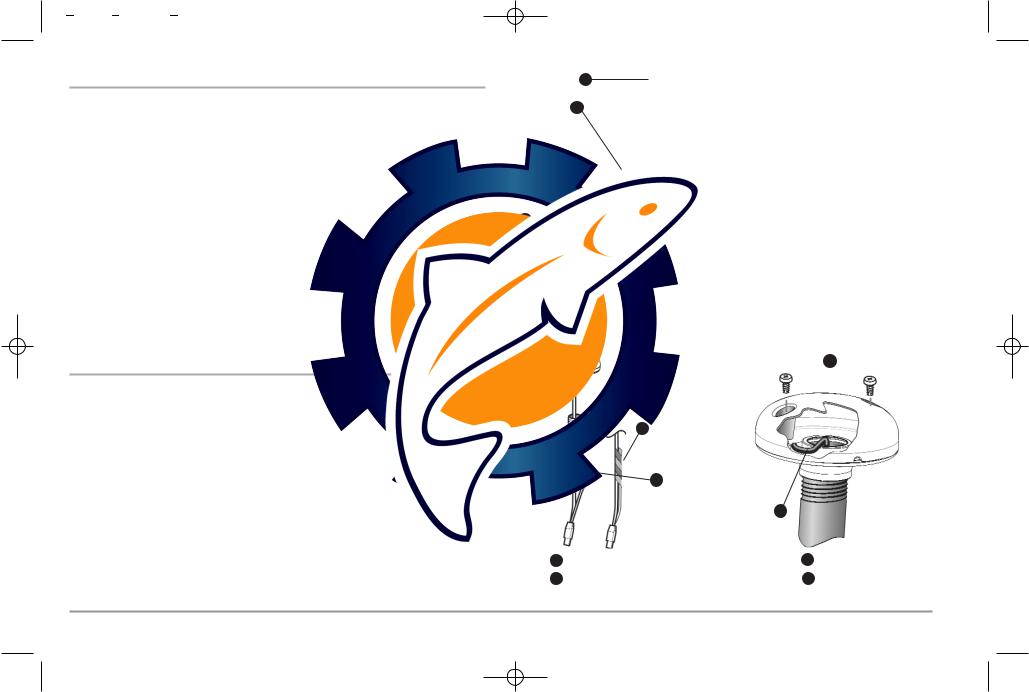
www98x Manual..reelsche531376-1 A.qxd m2/23/2005atic11:39..coAM mPage 24
GPS RECEIVER INSTALLATION |
(987c SI Combo models only) |
NOTE: You will only need to perform this procedure if you have a GPS Receiver.
To optimize performance of the GPS receiver, mount it in an area that has full exposure to the sky. The effective area of reception is 10° above the horizon. Different circumstances determine the mounting method appropriate for your GPS receiver.
If you have… |
Then use: |
An existing antenna stem with |
Stem Mount with Existing 1” - 14 Thread Stem |
standard 1" – 14 thread |
|
Access for cable routing under |
Access Under Mounting Location |
the mounting location |
|
No access under the mounting |
No Access Under Mounting Location |
location |
|
STEM MOUNTING WITH AN EXISTING 1" - 14 THREAD STEM
Follow these steps to stem mount the GPS receiver:
NOTE: If you have an existing stem for mounting the GPS receiver, proceed directly to step 2 of the following procedure.
1.Determine the best location to mount your GPS receiver. Preplan and test the cable routing to your control head before any drilling or cutting of your boat surfaces. If you have purchased hardware to stem mount your GPS receiver, follow the instructions included with that hardware to mount the stem (antenna pole).
NOTE: AS-EC10 10' extension cables are available from Humminbird® if your planned routing exceeds 20', (6 m). Maximum cable length, including extensions, should not exceed 50' (15 m).
NOTE: Remember to caulk or seal screw holes and drilled holes as needed to protect your boat from water damage.
|
1 |
2. Screw on the receiver base to the stem first, |
|
making sure that the stem pipe does not |
|
|
|
|
2 |
|
protrude from the receiver base. This adds |
|
|
protection to the cable when pulling it through |
|
|
the pipe stem. In addition to this, de-burr the |
|
|
pipe edges to reduce cable abrasion. |
|
|
3. Use electrical tape to secure the NMEA pigtail |
|
|
to the cable as shown. |
1 |
|
3 |
|
NOTE: Leave the NMEA pigtail secured to the cable |
|
2 |
|
|
|
unless needed. This will make removing the receiver |
|
3 |
|
|
|
easier. |
|
|
|
4.Route the GPS receiver cable through the stem and continue with the planned route you chose in step 1.
5.Attach the GPS receiver to its base using the included #6 - 7/8" (22 mm) screws.
 3
3 
|
1 |
|
2 |
|
4 |
1 |
3 |
2 |
4 |
18
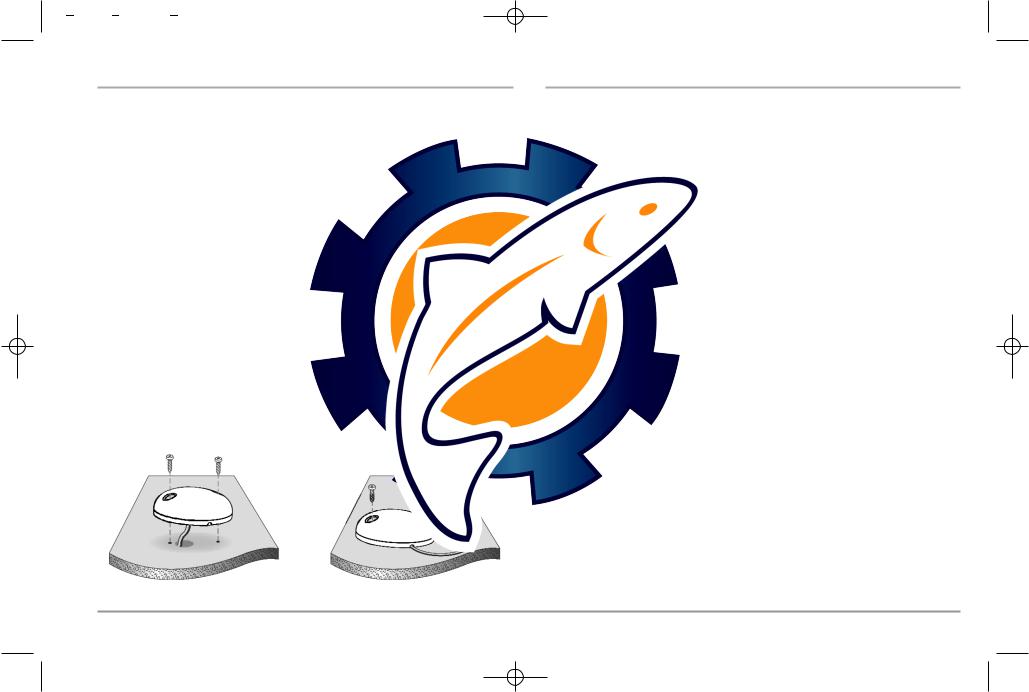
www98x Manual..reelsche531376-1 A.qxd m2/23/2005atic11:39..coAM mPage 25
ACCESS UNDER MOUNTING LOCATION
Follow these steps to deck mount the GPS receiver when routing the cable down through the mounting location:
1.Determine the best location, then test route the 20' (6 m) cable from the mounting location to the control head.
NOTE: Installation details may vary with unit configuration.
2.Mark the mounting location and drill a 3/4" (19 mm) hole for the cable and cable plug. Route the cable.
3.Cover the cable hole with the receiver. Make sure the receiver is flush on the surface and mark the two mounting holes with a pencil or punch.
4.Move the receiver to the side and drill two pilot holes using a 9/64" (3.5 mm) bit.
NOTE: Remember to caulk or seal screw holes and drilled holes as needed to protect your boat from water damage.
5.Align the GPS receiver screw holes over the pilot screw holes and attach with the #8 - 1 1/4" (32 mm) Phillips head screws. Hand tighten only!
NOTE: If the mounting surface is thin and made of a lighter material, a backing material may be needed below the mounting surface.
Access Under Mounting Location |
No Access Under Mounting Location |
NO ACCESS UNDER MOUNTING LOCATION
Follow these steps to deck mount the GPS receiver in a situation where you must route the cable to the side because there is no space for a cable underneath the mounting location.
1.Determine the best location, then test route the cable from the mounting location to the control head.
NOTE: AS-EC10 10' extension cables are available from Humminbird® if your planned routing exceeds 20', (6 m). Maximum cable length, including extensions, should not exceed 50' (15 m).
2.Confirm the cable length is good and route the cable from the receiver to the control head. If holes are required to route the cable, they must be 3/4" (19 mm) to allow for the cable connector. Secure the NMEA pigtail with electrical tape.
NOTE: Remember to caulk or seal screw holes and drilled holes as needed to protect your boat from water damage.
3.The GPS receiver has two wire routing notches. Use the cable notch closest to the intended cable route.
4.With the cable routed, position the GPS receiver in the planned mounting location and mark the mounting holes with a pencil or punch.
5.Move the GPS receiver to the side and drill the two 9/64" (3.5 mm) pilot holes.
6.Align the GPS receiver's screw holes over the pilot screw holes and attach with the #8 - 1 1/4" (32 mm) Phillips head screws. Hand tighten only!
19
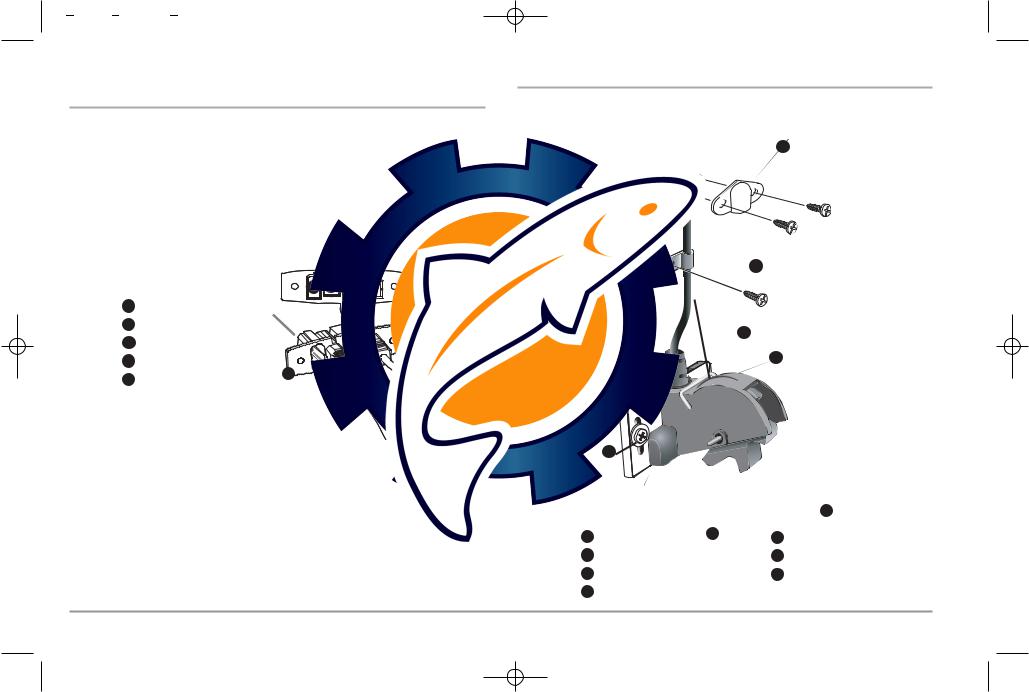
www98x Manual..reelsche531376-1 A.qxd m2/23/2005atic11:39..coAM mPage 26
FINISH ROUTING THE CABLE AND CHECK
GPS RECEIVER OPERATION
After installing a GPS receiver, you should perform the following procedure to finish routing the GPS cable to the control head and to check to make sure that the control head is working correctly.
1.Secure the cable along its path to the control head as needed with cable ties.
2.Plug in the GPS receiver cable into the Communications port on the control head. See Testing the System Installation to use the System Status start-up option and/or the GPS Diagnostic View to confirm a good installation.
1 2 3 4
1
2
3
5 |
5 |
|
SPEED ACCESSORY INSTALLATION
NOTE: You will only need to perform this procedure if you have a Speed-Only Sensor.
1
|
3 |
|
4 |
|
5 |
|
2 |
|
7 |
1 |
6 |
2 |
|
3 |
|
4 |
|
20
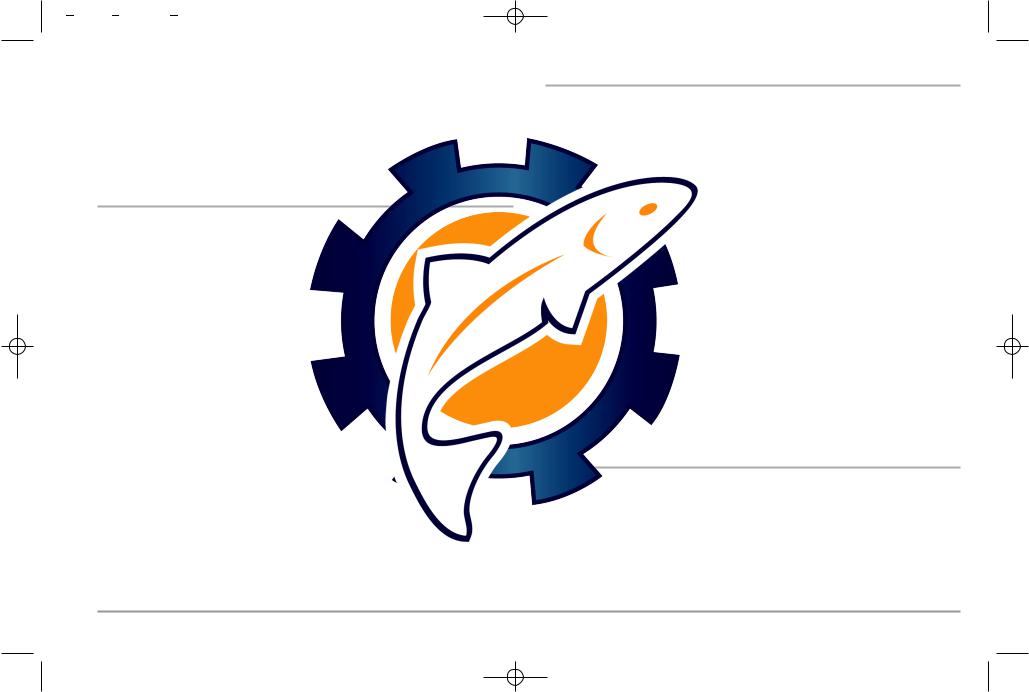
www98x Manual..reelsche531376-1 A.qxd m2/23/2005atic11:39..coAM mPage 27
The Speed accessory incorporates a paddlewheel-type speed sensor in a high-impact plastic housing. The module is intended for installation on the transom, and will work well on almost any boat.
In addition to the parts supplied, you will need a hand drill with various bits, marinegrade silicone sealant, and a Phillips head screwdriver.
Install the Speed accessory:
1.Locate an area on the transom of your boat that will be 6” (152 mm) to 8” (203 mm) or farther from the transducer(s). This area must also maintain contact with the water, even at high speeds. Do not mount the accessory directly in front of the propeller or outdrive, and make sure that there are no protrusions such as ribs, rows of rivets, or transducers directly forward of the mounting location, as these may affect the flow of water over the paddlewheel.
2.Align the accessory on the transom so that the lower edge is flush with the hull of the boat and the tab on the bottom of the housing aligns with the bottom of the hull, and mark the hole locations. If the transom angle is excessive, a fairing block may be needed to level the paddlewheel for proper operation.
3.On fiberglass hulls, it is best to start with a smaller drill bit and use progressively larger bits to reduce the chance of chipping or flaking the outer coating. Drill two 9/64” (3.5 mm) mounting holes approximately 3/4” (19 mm) deep.
4.Seal the mounting holes with marine-grade silicone sealant, and attach the module to the transom using the two washers and two screws provided.
Hand tighten only!
Routing the speed cable to the control head:
1.You may route the cable over the top of the transom, or drill a 5/8” (16 mm) diameter hole in the transom directly above the module and above the waterline to route cable through. Use the cable clamps provided to secure the cable to the transom of the boat. If you use a through-hole, then also use the included escutcheon plate to dress the hole.
NOTE: On fiberglass hulls, it is best to start with a smaller drill bit and use progressively larger drill bits to reduce the chance of chipping or flaking the outer coating.
2.All mounting screws require a 9/64" (3.5 mm) pilot hole drilled approximately 5/8” (16 mm) deep. Additionally, seal any hole drilled in the transom of the boat with marine-grade silicone sealant (not included).
3.Route the cable to the control head, and insert the connector into the appropriate slot. Use the connector designated for accessories on the control head.
4.If the connections are correct, the control head will begin displaying boat speed information immediately (assuming that the control head is powered on and the boat is moving). If the speed sensor fails to read properly at high speeds, adjust the height of the module on the transom.
Cleaning the Speed accessory:
1.You should periodically remove the paddlewheel from the housing and clean it to remove growth resulting from the marine environment, as a clean paddlewheel results in more accurate readings.
NOTE: This procedure should only be performed when the boat is not running, and is normally performed when the boat is out of the water.
21
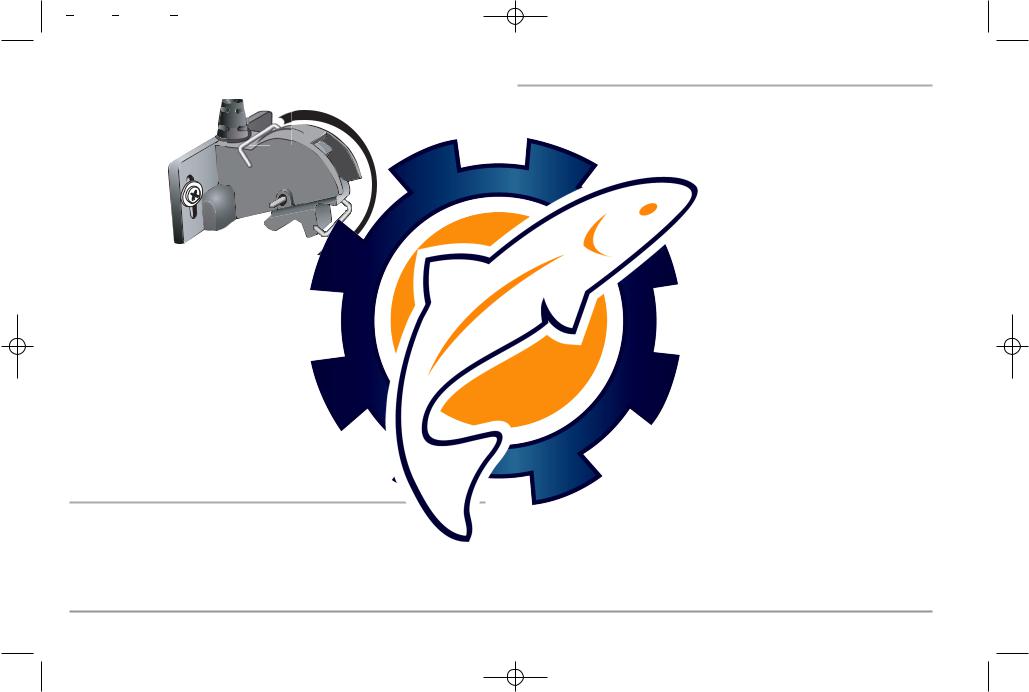
www98x Manual..reelsche531376-1 A.qxd m2/23/2005atic11:39..coAM mPage 28
Rotating Retaining Axial Clip to Remove Paddlewheel
2.Clean the paddlewheel by disengaging the axial clip from the housing wedge and rotating it forward. Once you have rotated the axial clip, remove it from the housing by sliding it away from the holes in the housing.
3.Clean the removed paddlewheel with a mild solution of biodegradable soap or hot water. Clean the wheel well of debris and/or algae at this time.
4.Once you have cleaned the paddlewheel, you may re-insert it into the housing. Next, slide the axial clip back into the holes, then rotate it backwards to lock it into place with the wedge in the housing.
NOTE: The paddlewheel must be oriented so that it is scooping the water.
TESTING THE SYSTEM INSTALLATION
After you have completed the installation of the control head, transducer, and any other accessories such as the GPS receiver, and have made all the cabling connections required, you must test the installation before using the system. Thorough testing should be performed with the boat in the water; however, you can confirm basic operation initially with the boat out of the water as well.
To test the installation:
1.Press the POWER/LIGHT key on the control head once to turn on the control head. (There will be an audible chirp to let you know that you pressed the key, and the initial Title screen will appear.) If the control head does not power up, make sure that power is available. While the Title screen is shown on the display, press the MENU key to display the Start-Up Options menu. Use the UP or DOWN 4-WAY Cursor keys to position the cursor, then the RIGHT Cursor key to select System Status from the Start-Up Options menu (see the Start-Up Options Menu section for more information about these menu choices). The System Status Self Test screen will appear.
NOTE: If you wait too long, the system will default to whichever menu mode happens to be highlighted, and you will have to start again.
2.Self Test displays results from the internal diagnostic self test, including unit serial number, Printed Circuit Board (PCB) serial number, software revision, total hours of operation and the input voltage. See System Status for more information about the Self Test.
3.From the System Status screen, view accessory connections by pressing the VIEW key. See System Status for more information about the Accessory Test.
NOTE: The speed accessory (if attached) will be detected only if the paddlewheel has moved since your 900 Series™ was powered up.
4.From the System Status screen, see a GPS Diagnostic View by pressing the View key. GPS Diagnostic View shows a sky chart and numerical data from the GPS receiver. The sky chart shows the location of each visible GPS satellite with its satellite number and a signal strength bar. A dark grey bar indicates that the satellite is being used to determine your current position. A light gray bar indicates that the satellite is being monitored, but is not yet being used. See System Status for more information about the GPS Diagnostic View.
NOTE: The GPS Diagnostic View is only available on the 987c SI Combo model.
22
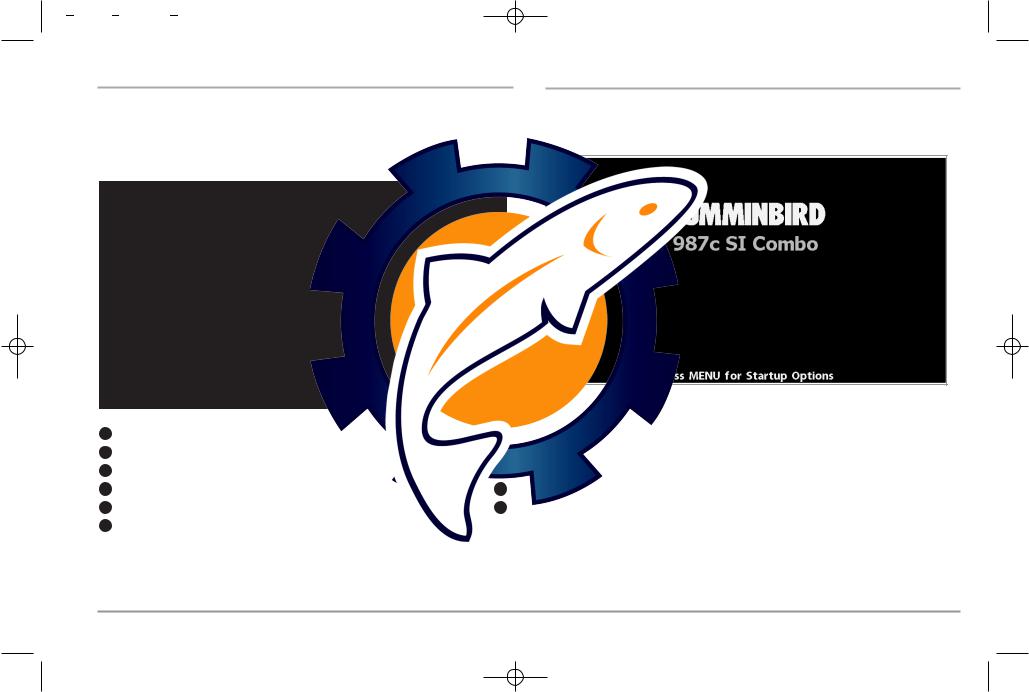
www98x Manual..reelsche531376-1 A.qxd m2/23/2005atic11:39..coAM mPage 29
GETTING STARTED - USING YOUR 900 SERIES™
Your 900 Series™ Fishing System user interface is easy to use. A combination of keys, different views, and situation-specific, customizable menus allows you to control what you see on the color display. Refer to the following illustration, and see Key Functions, Views, and The Menu System for more information.
11
 10
10




 7 1
7 1 

 6
6

 3
3
1 |
7 |
2 |
8 |
3 |
9 |
4 |
10 |
5 |
11 |
6 |
|
POWERING UP THE CONTROL HEAD
Turn on your 900 Series™ control head by pressing the POWER key. The Title screen is displayed until the 900 Series™ begins operation. Your 900 Series™ will begin Normal or Simulator operation, depending on the presence or absence of a transducer.
900 Series™ 987c SI Combo Title Screen
23
